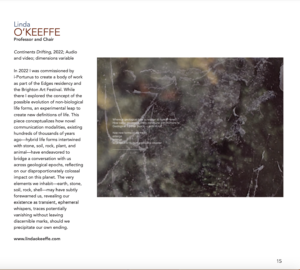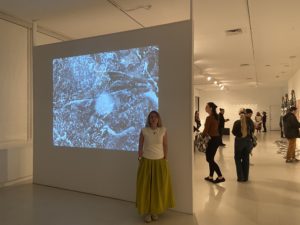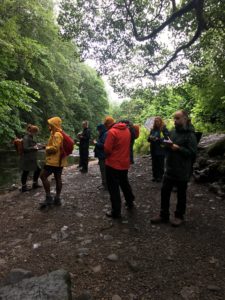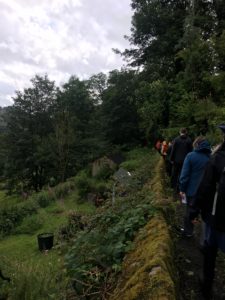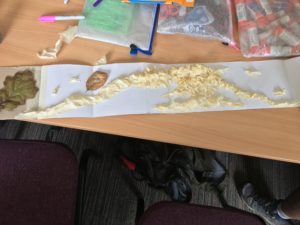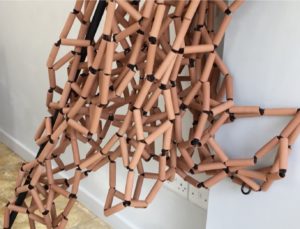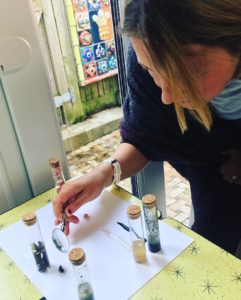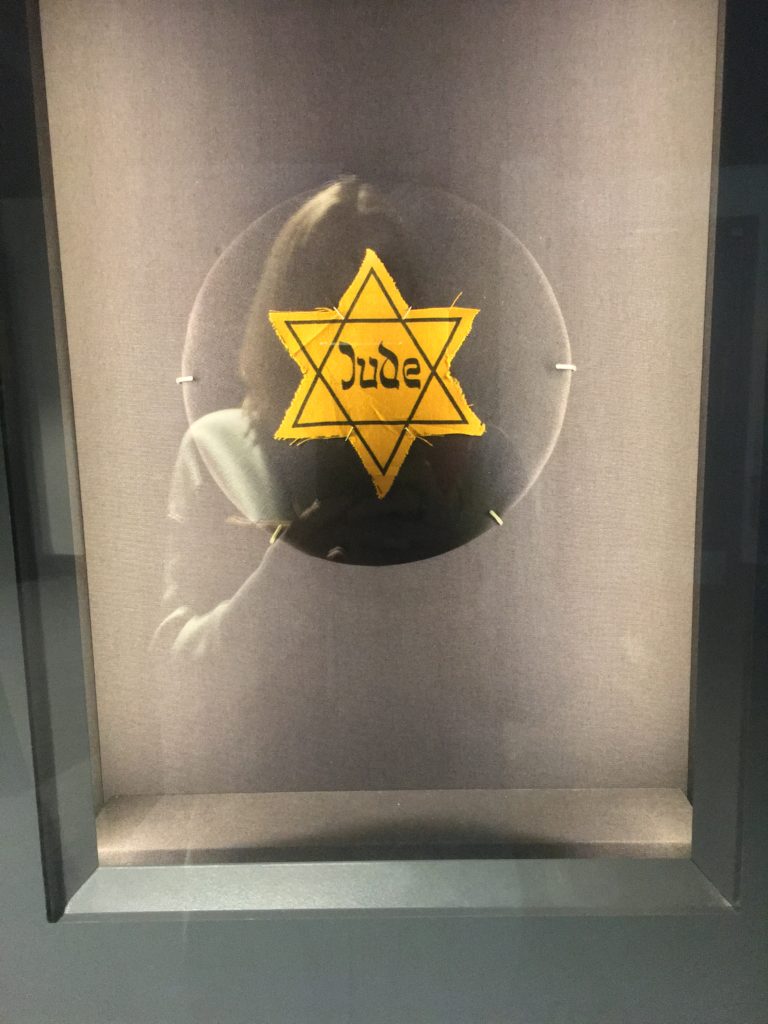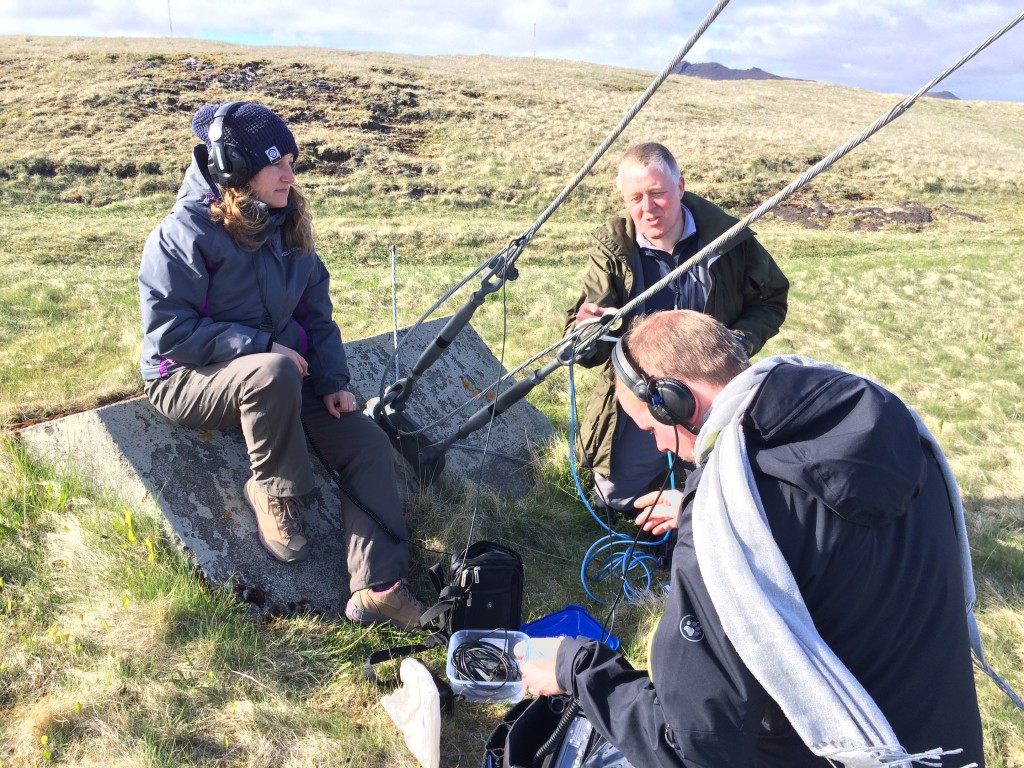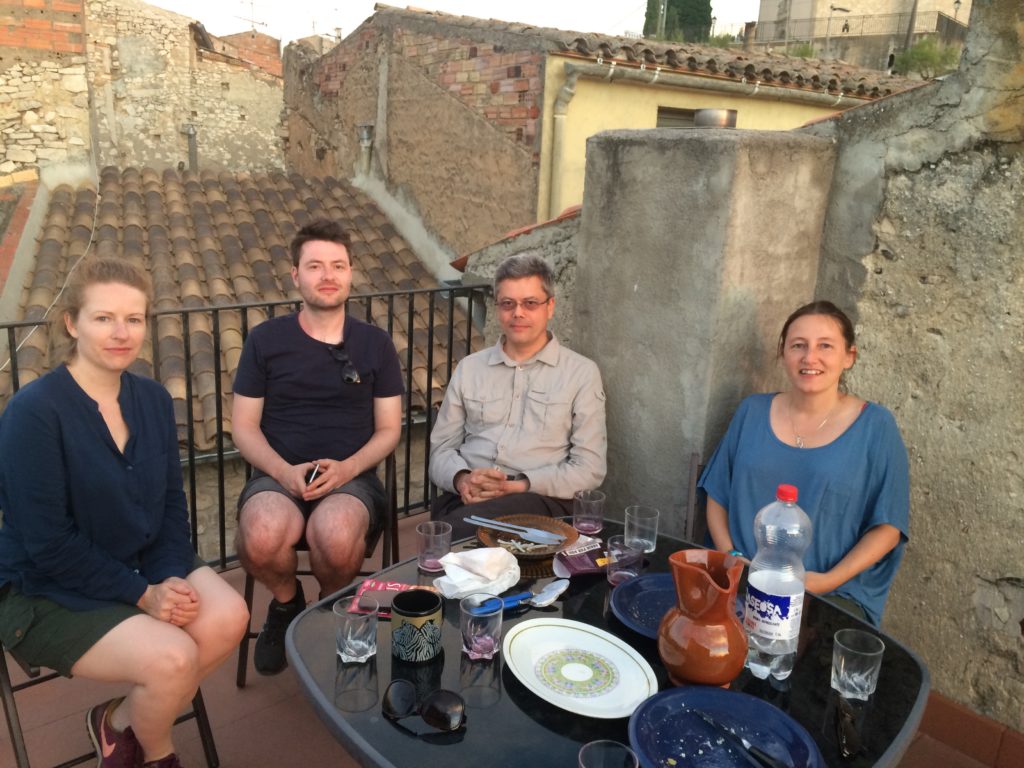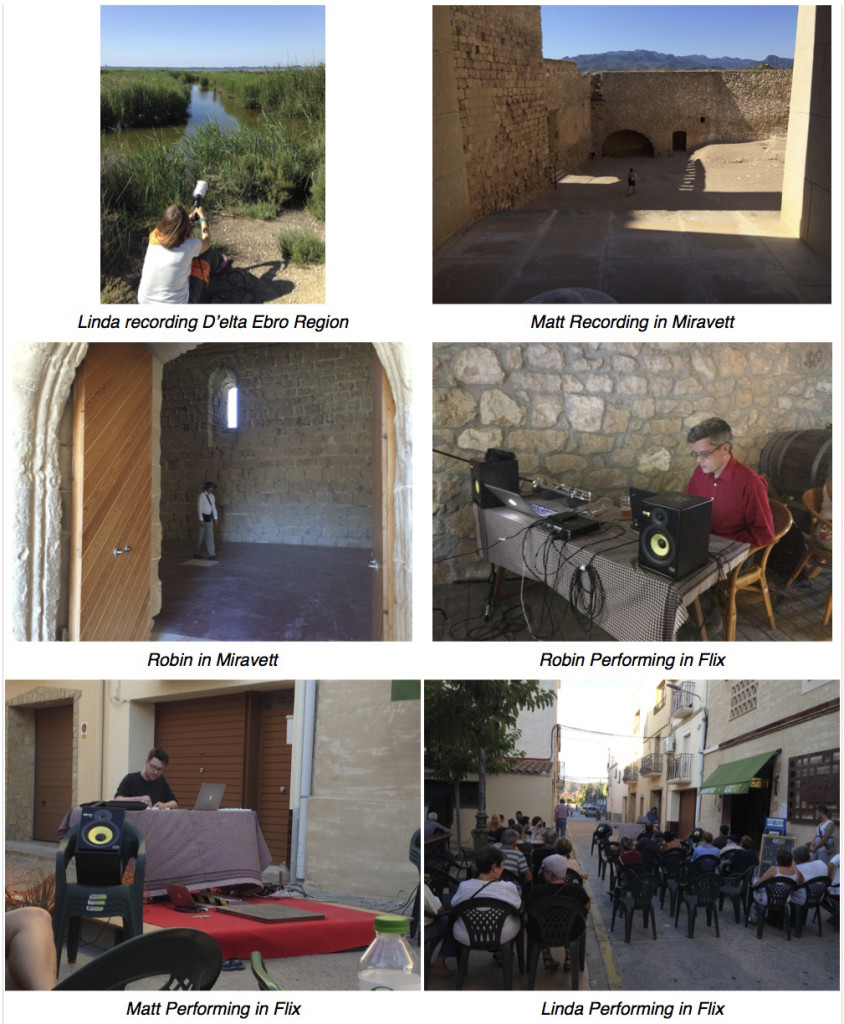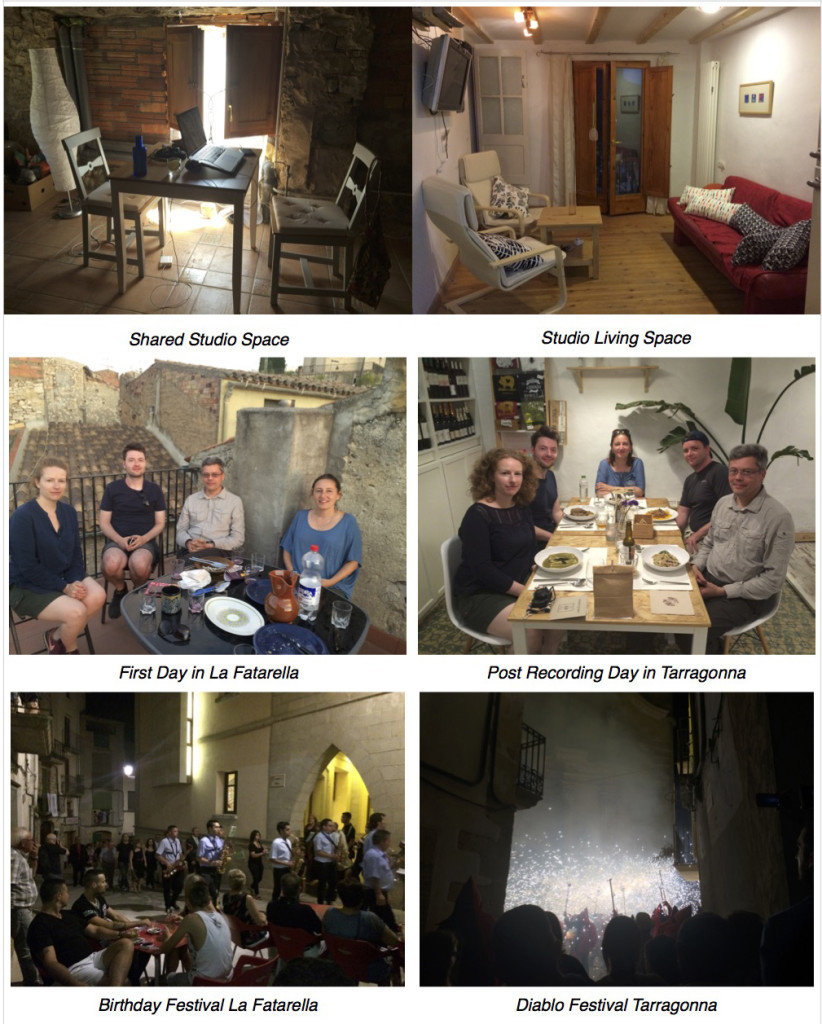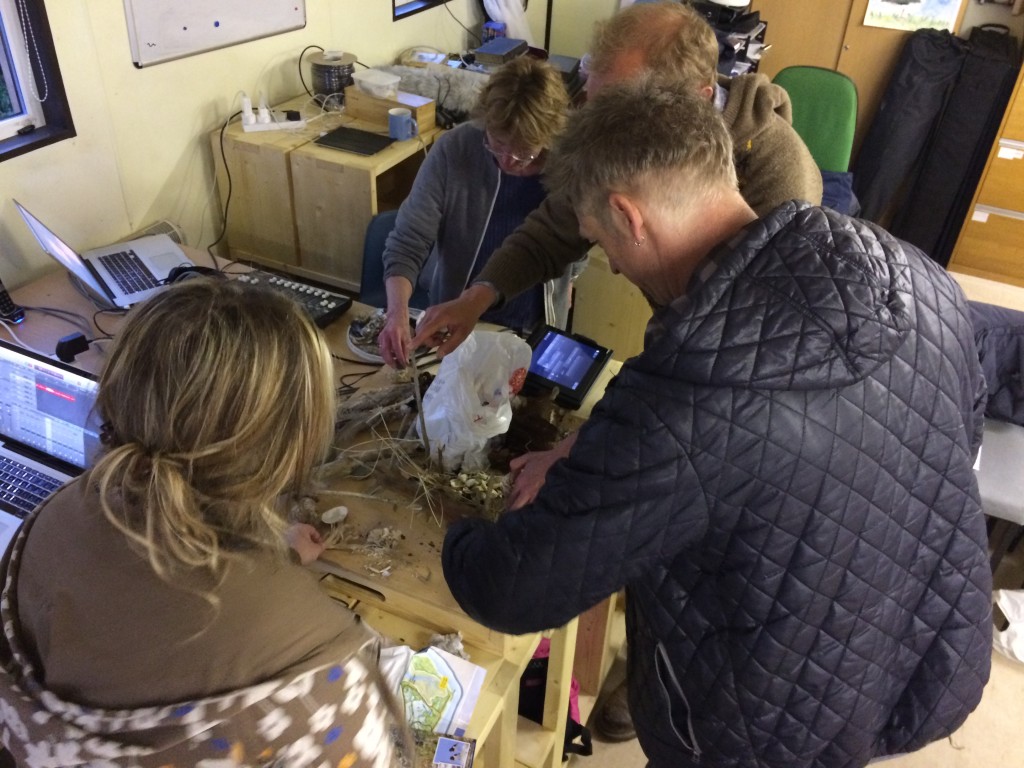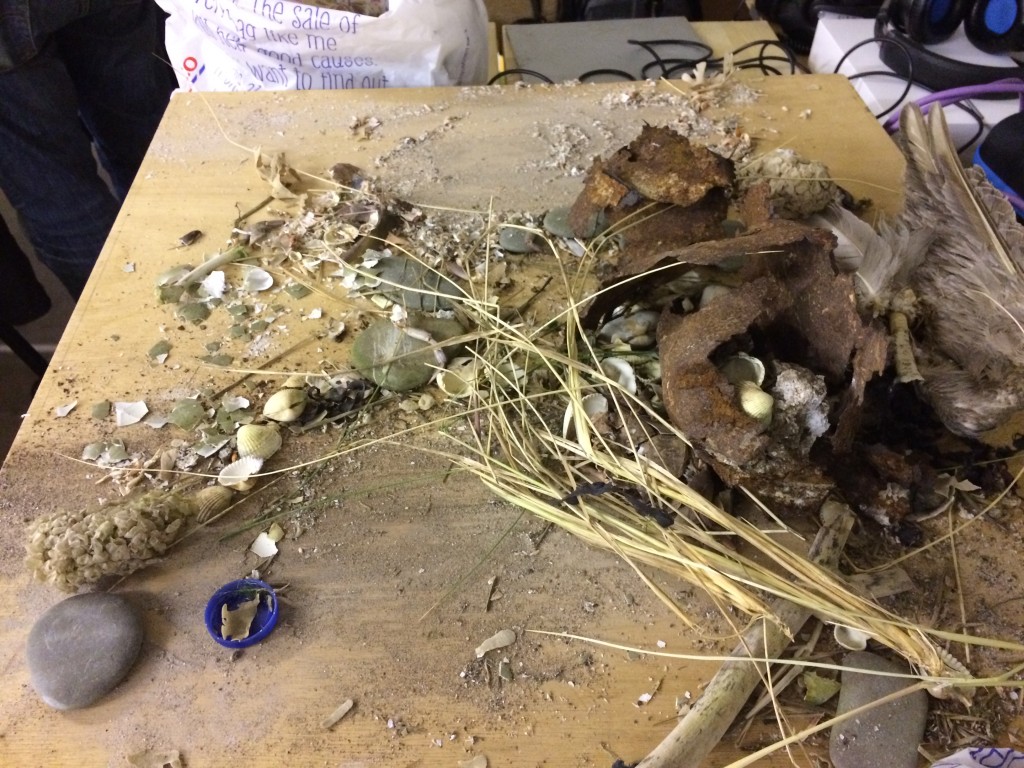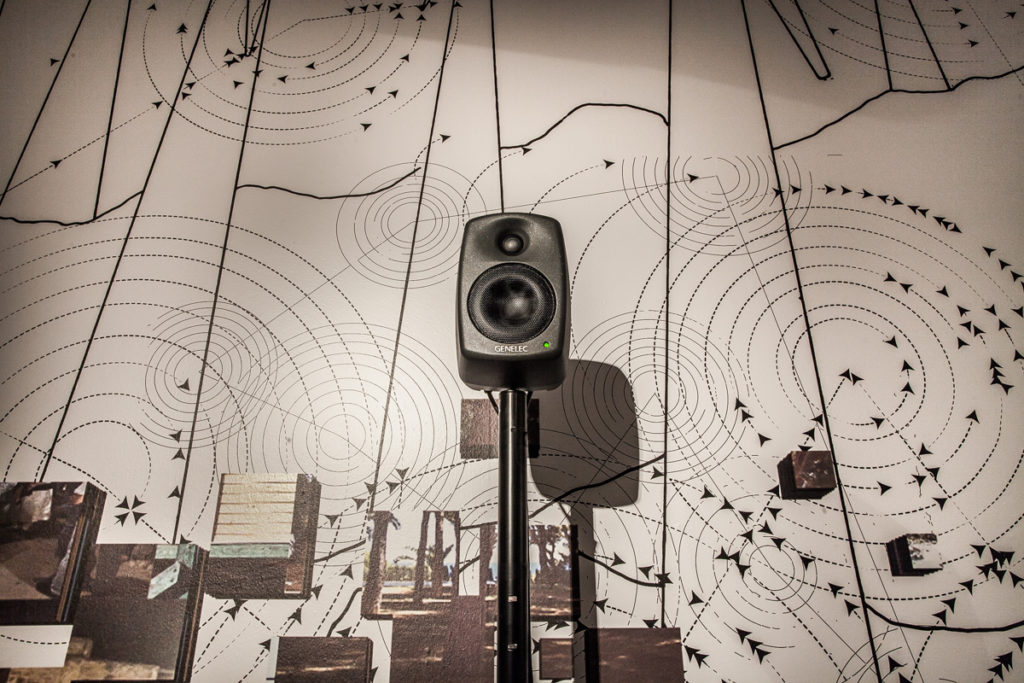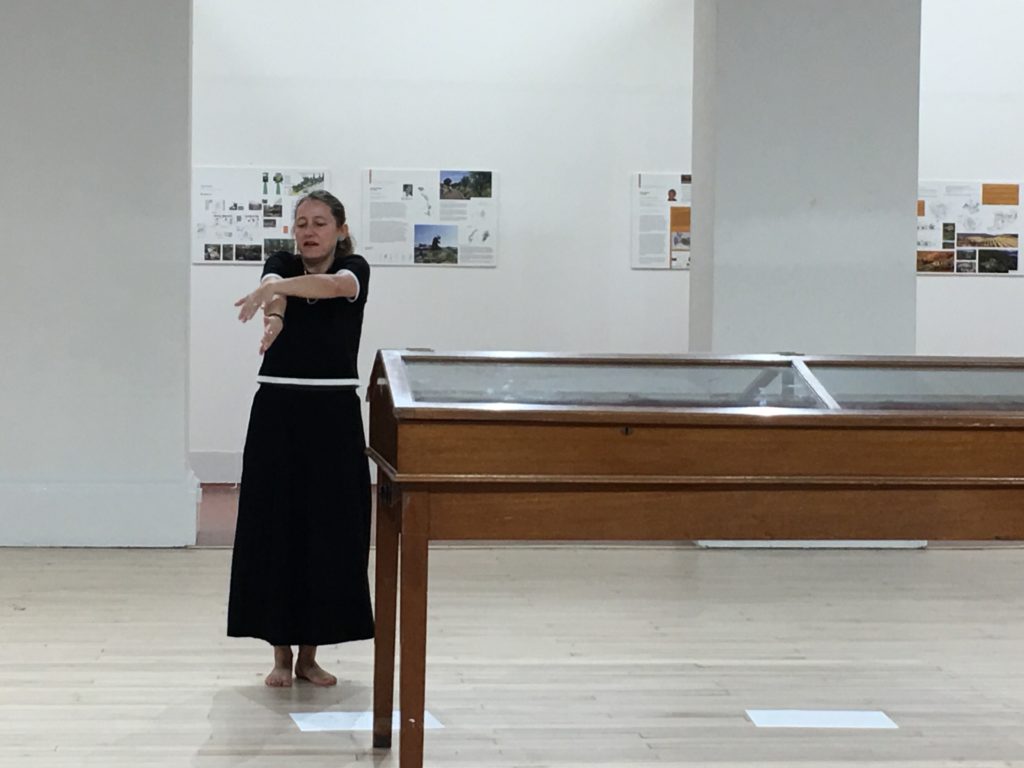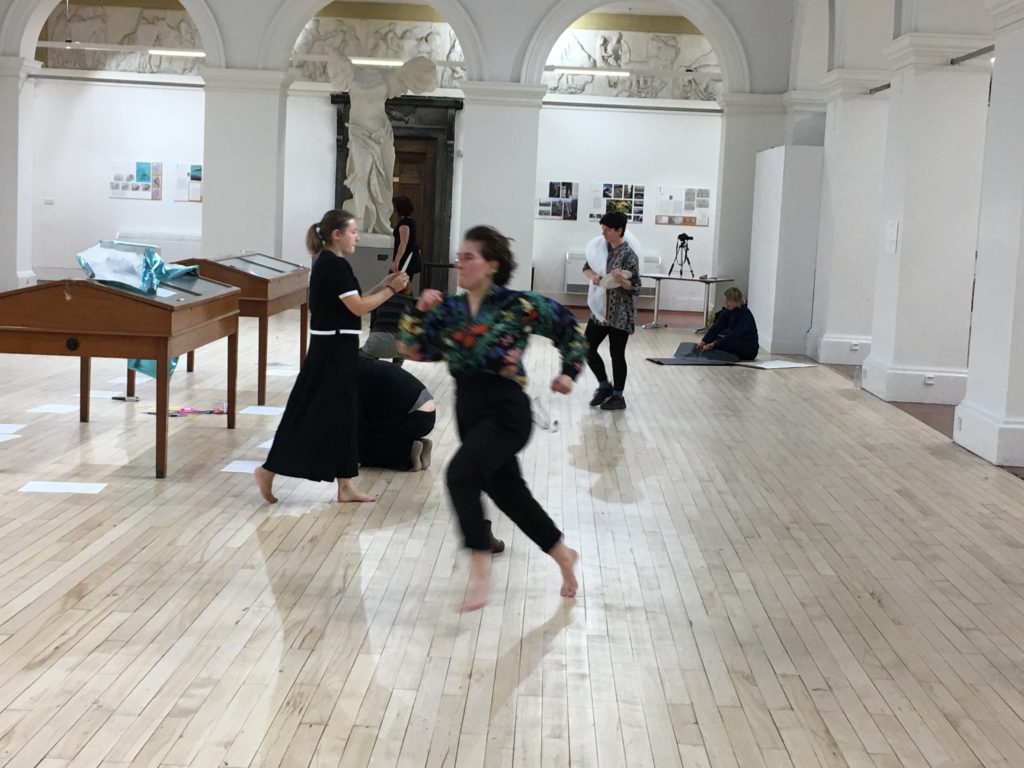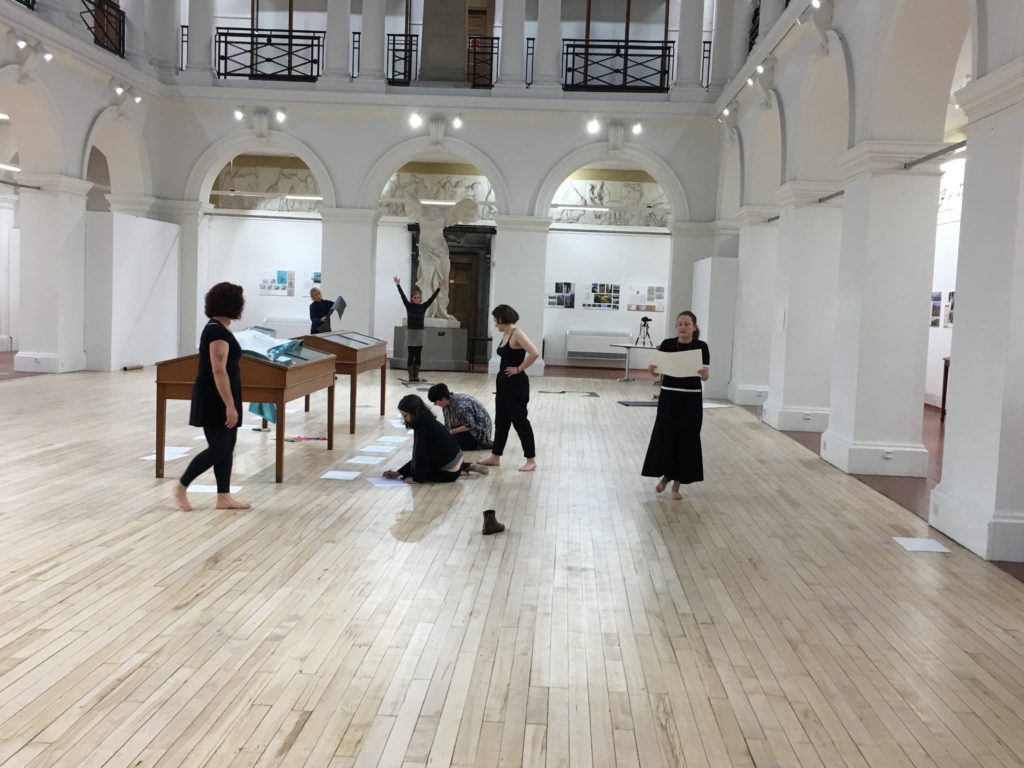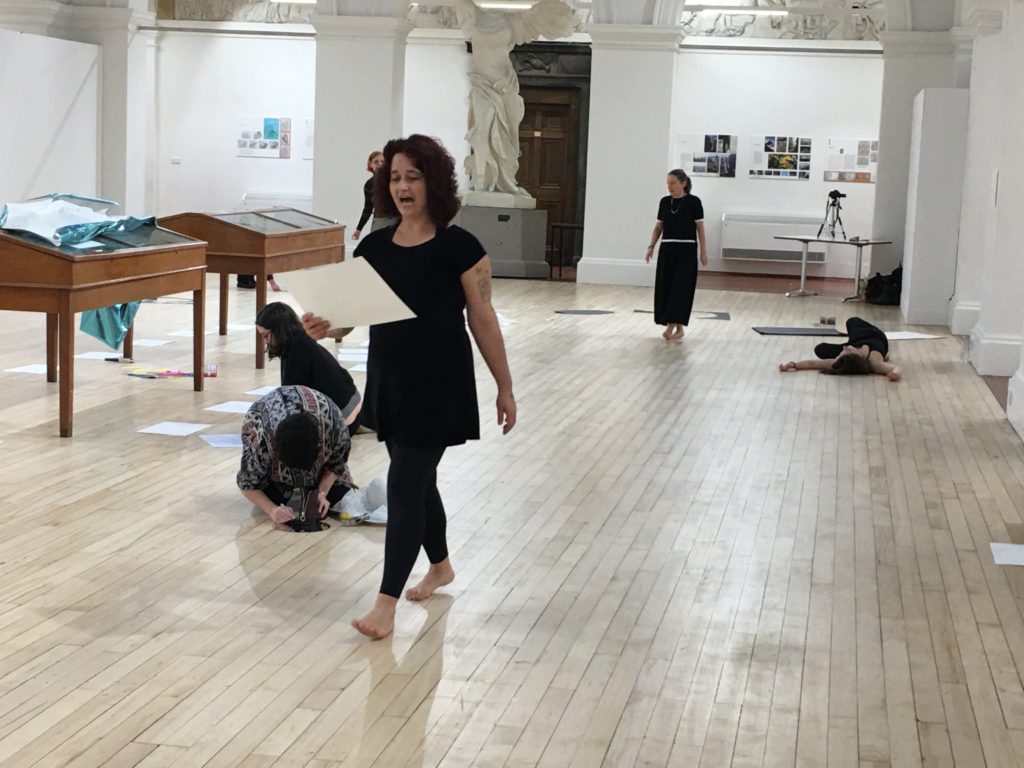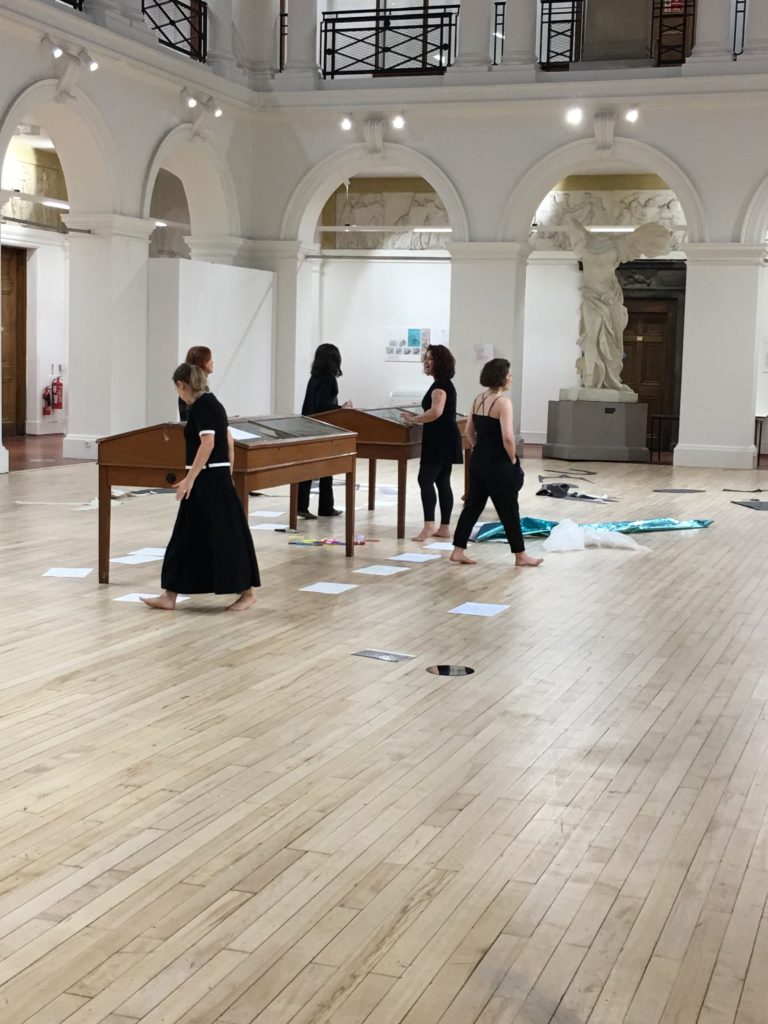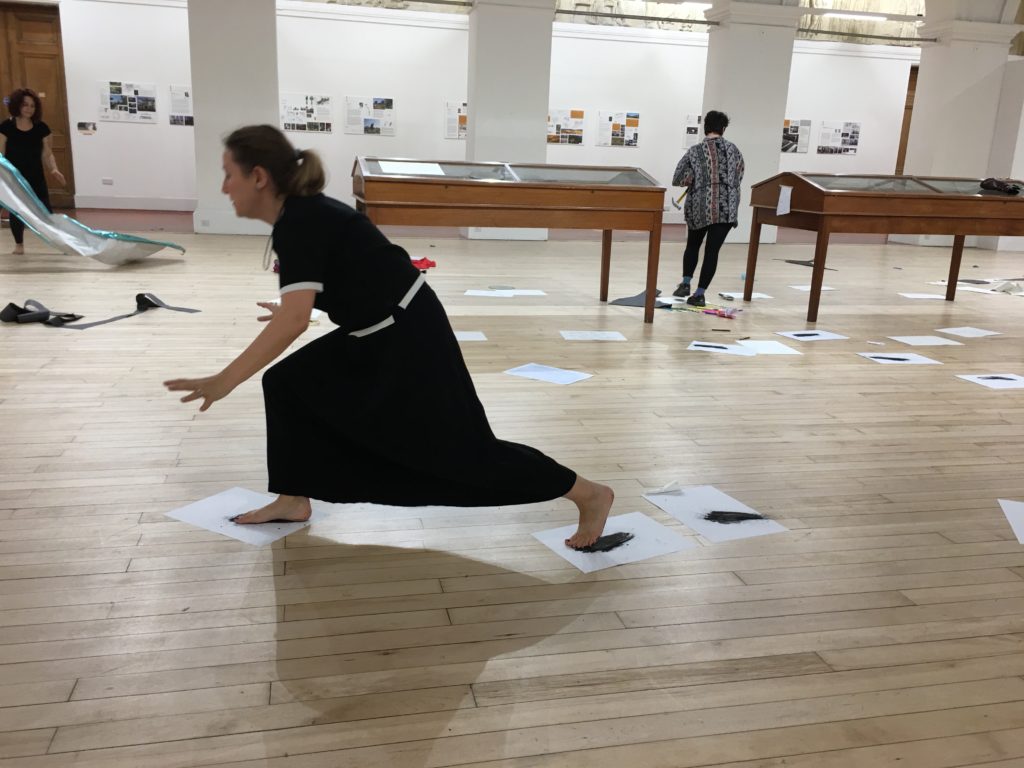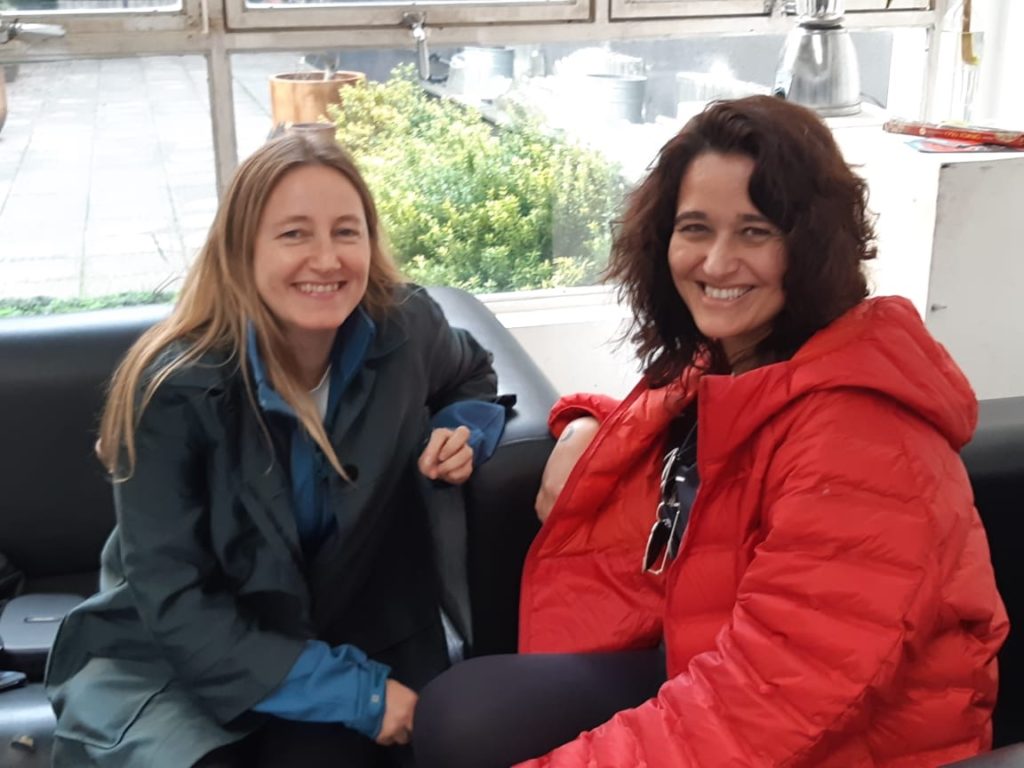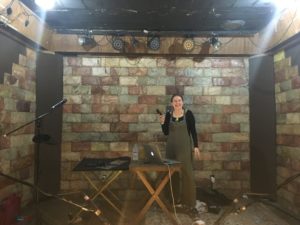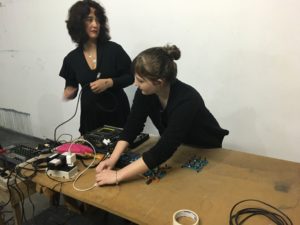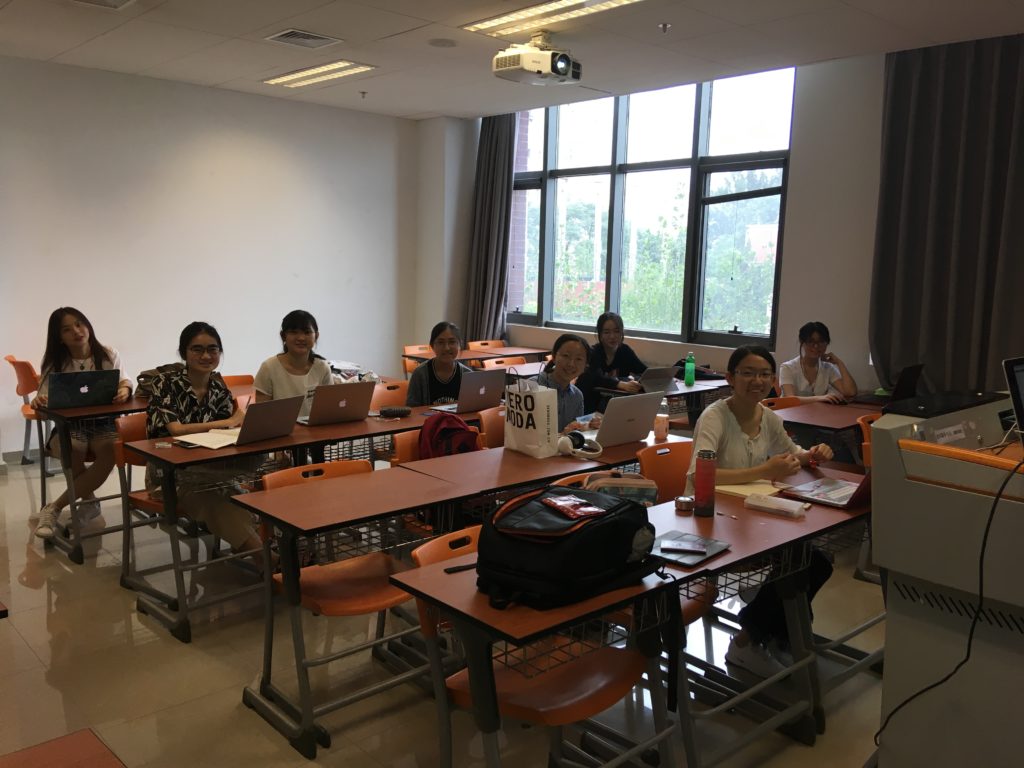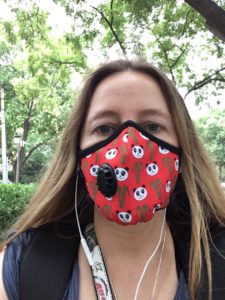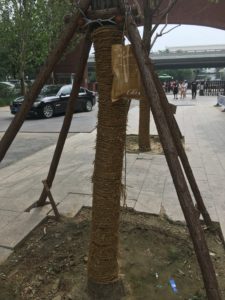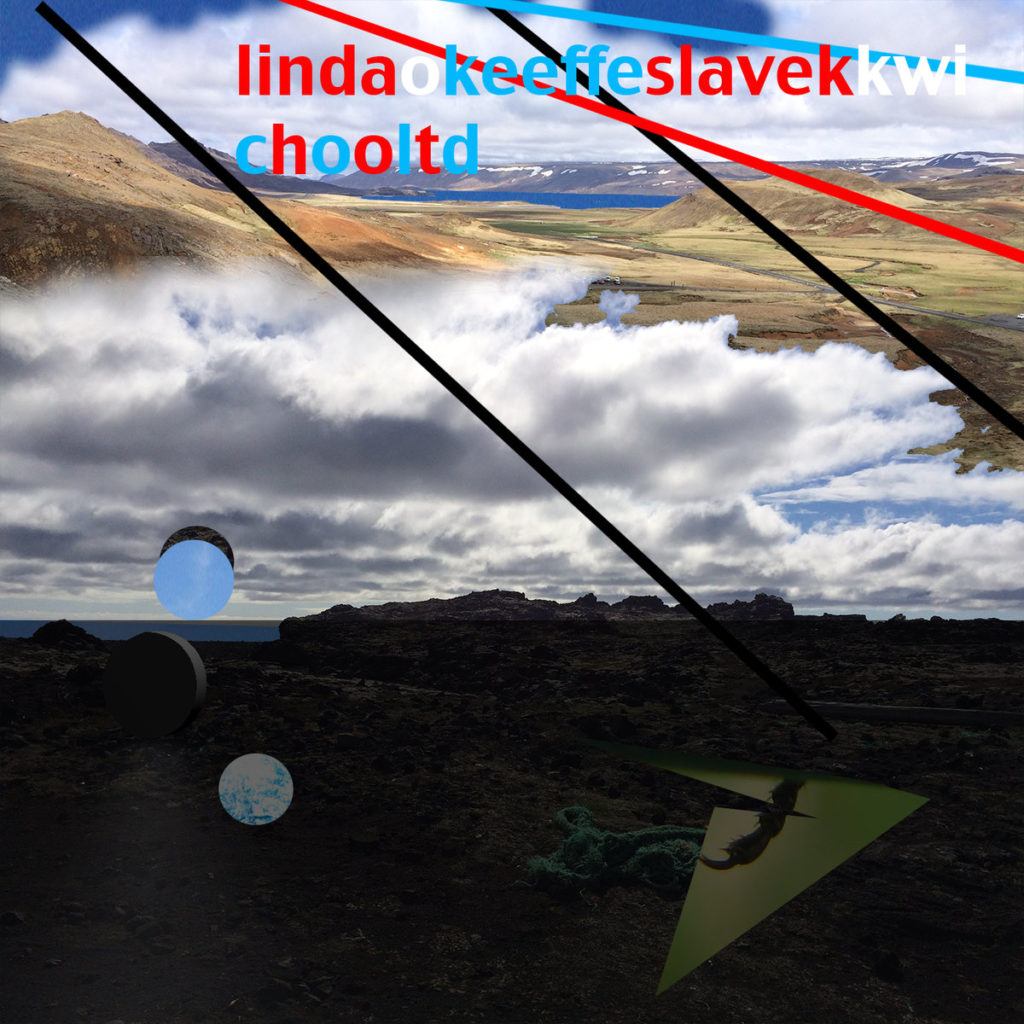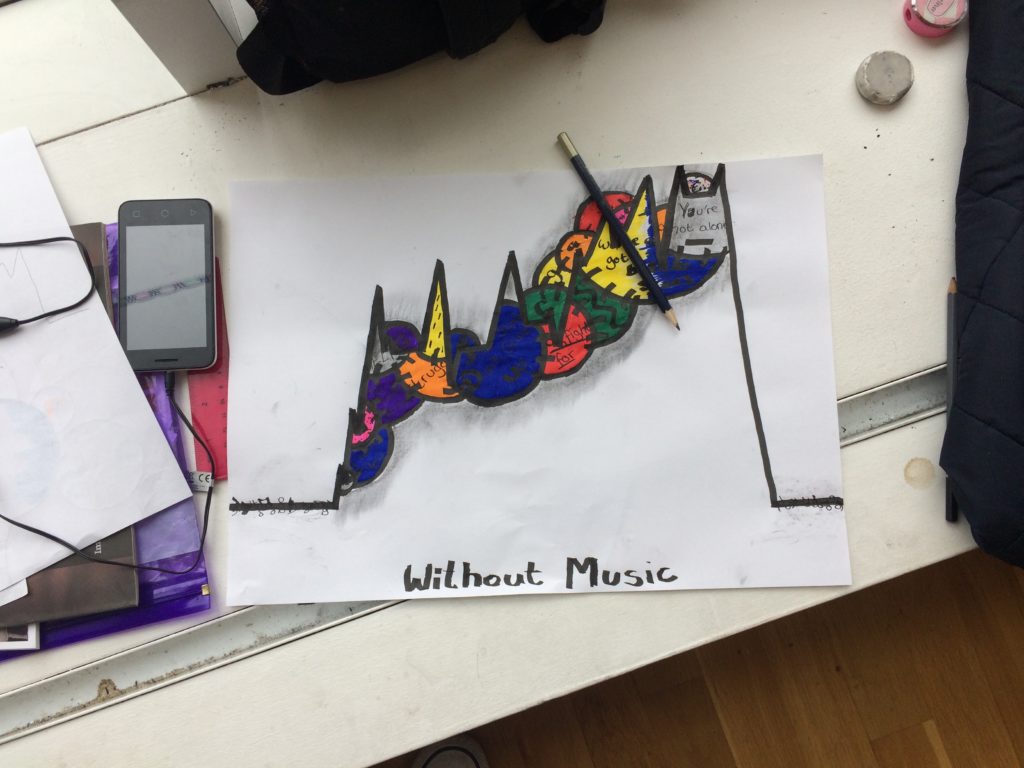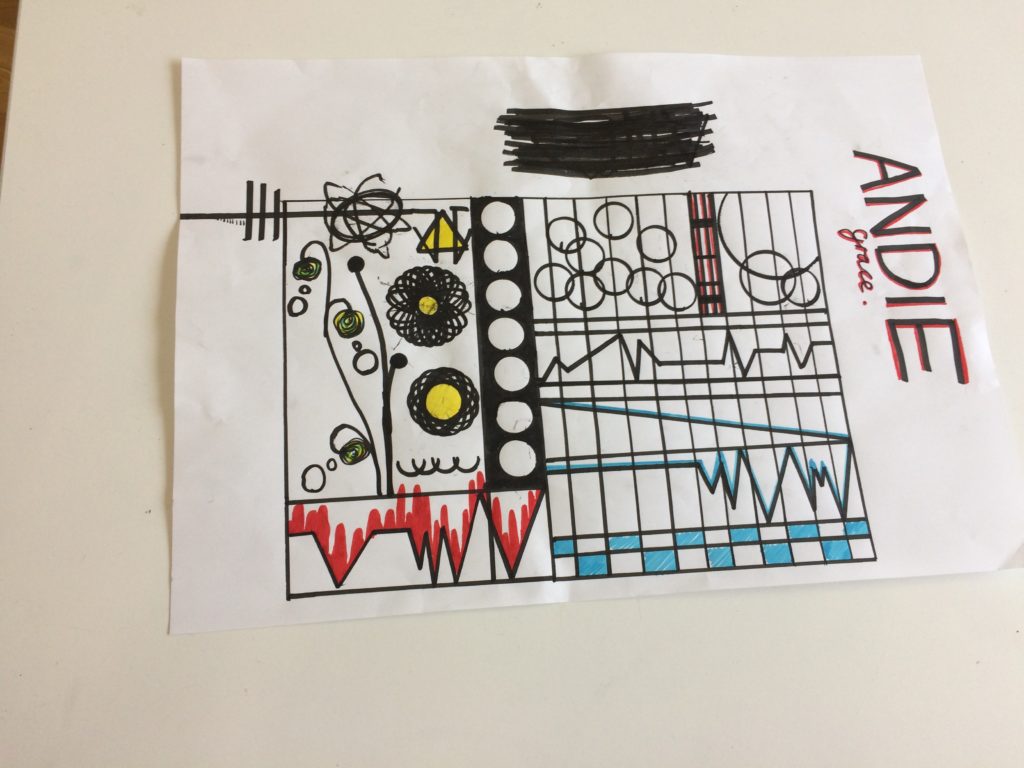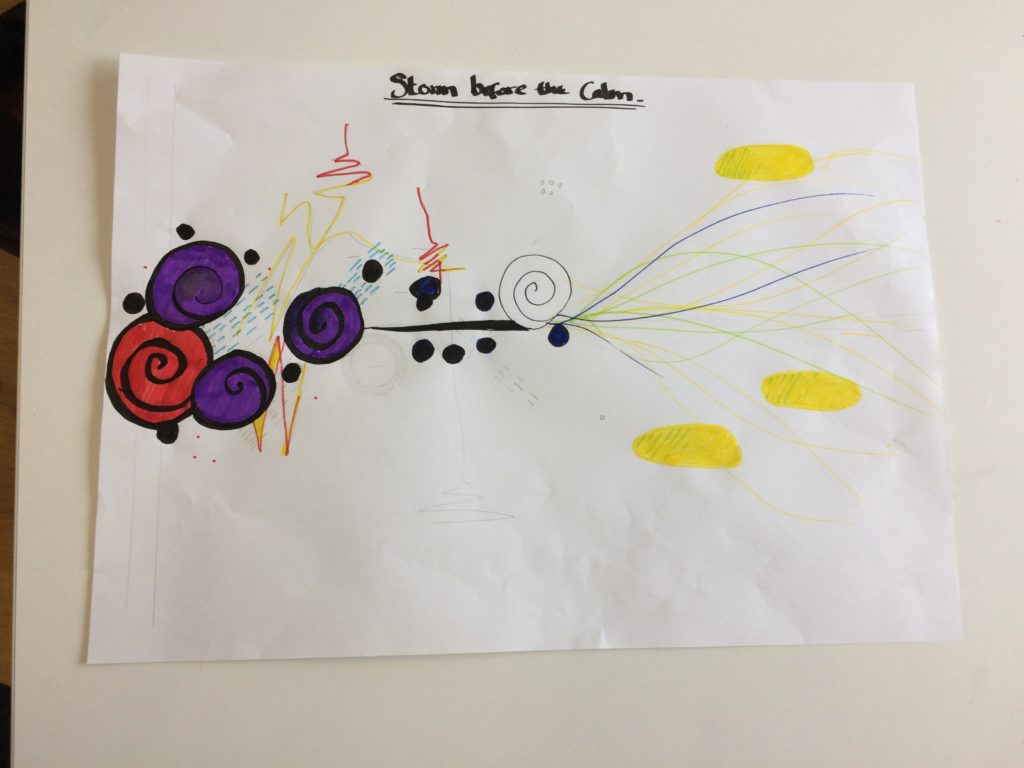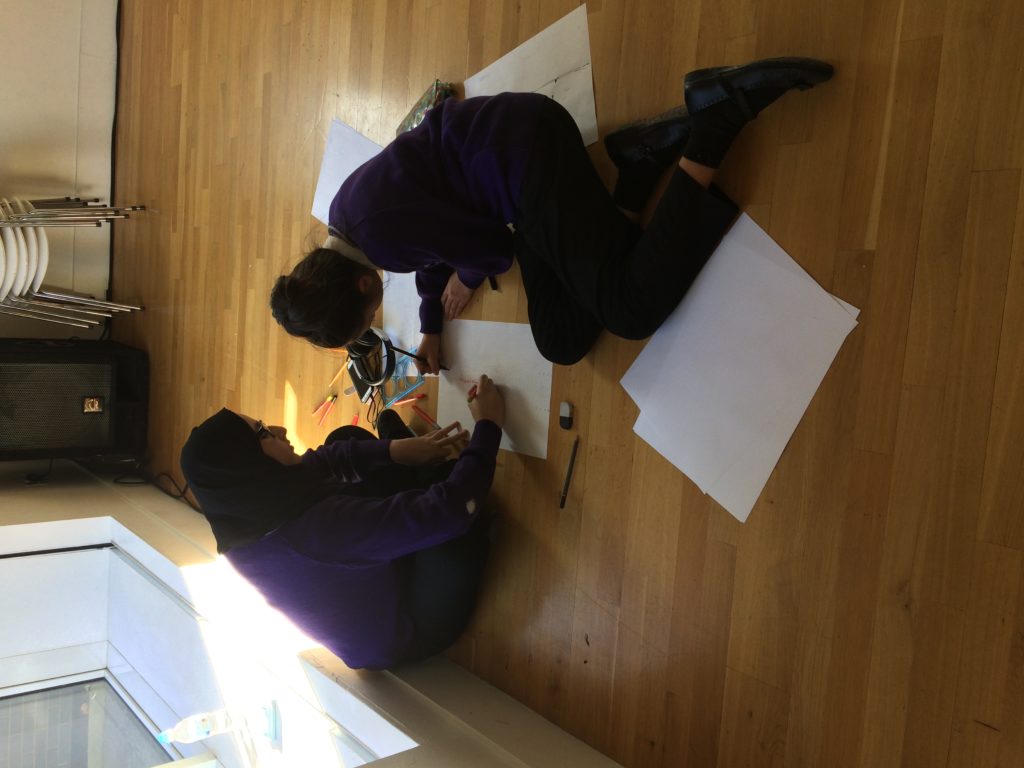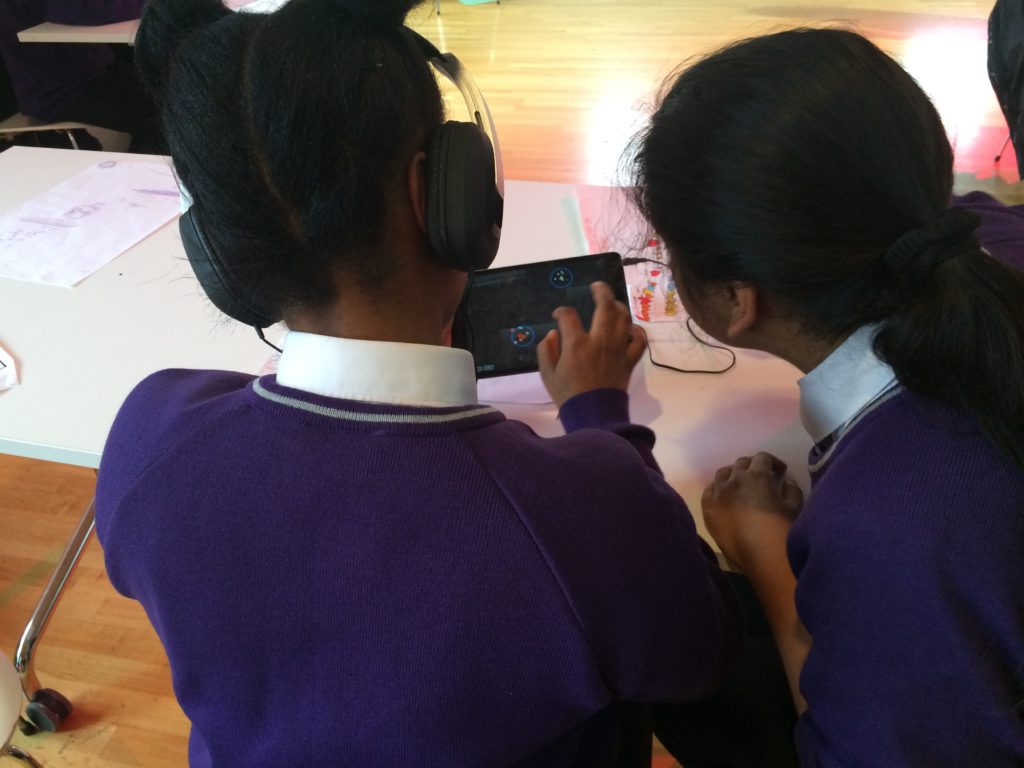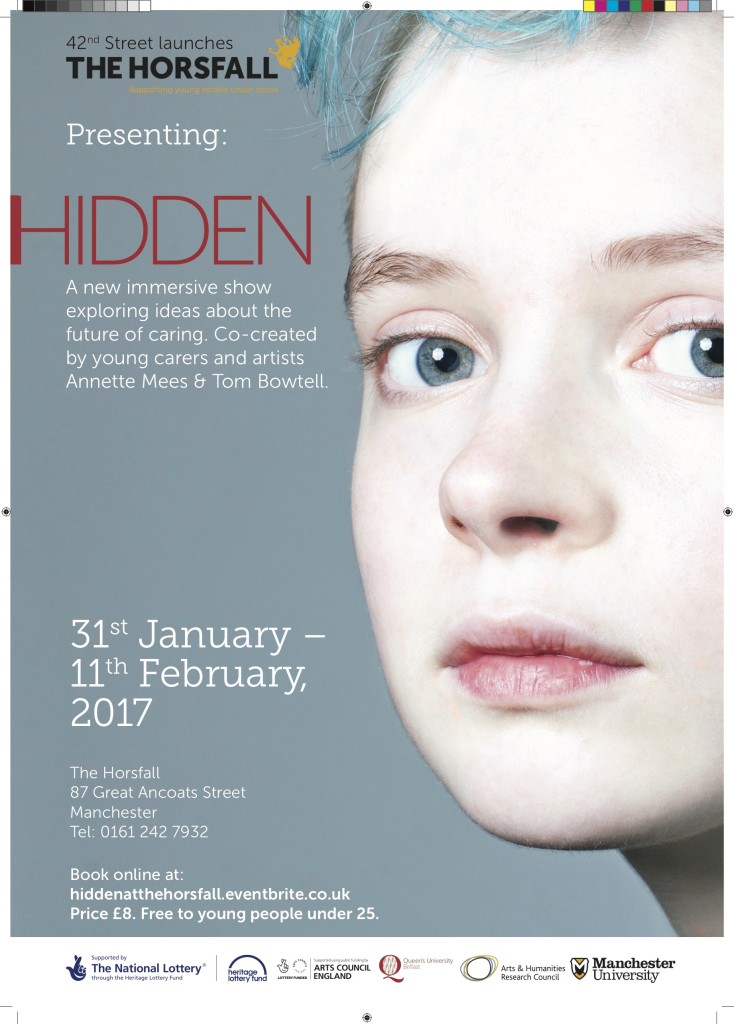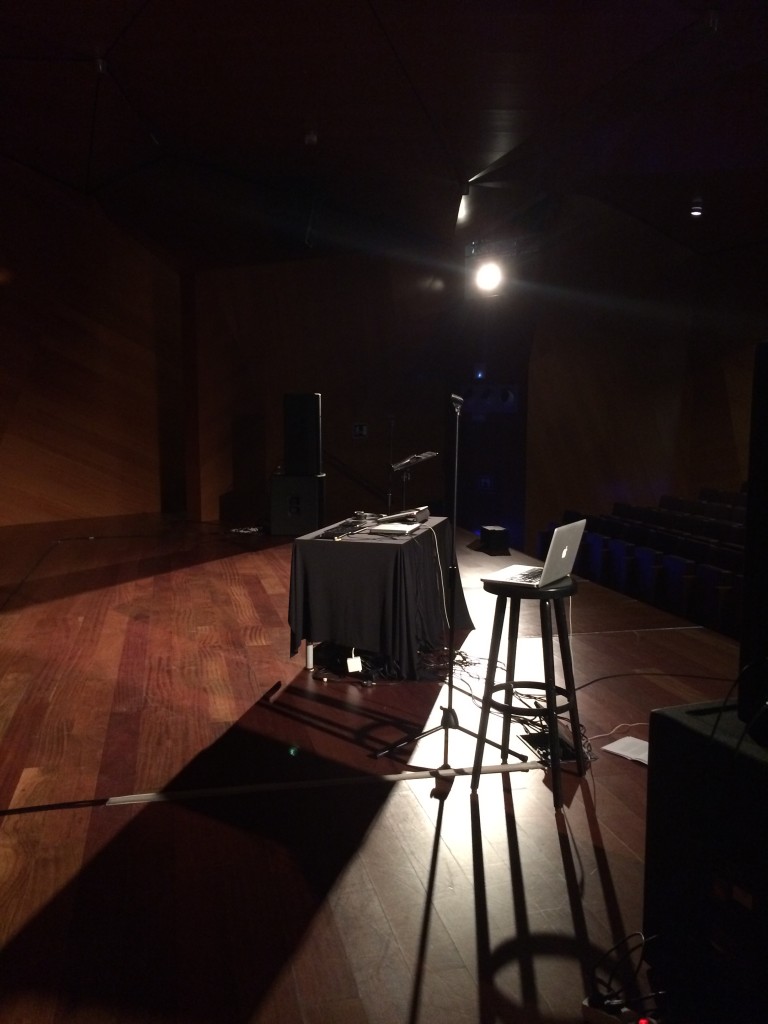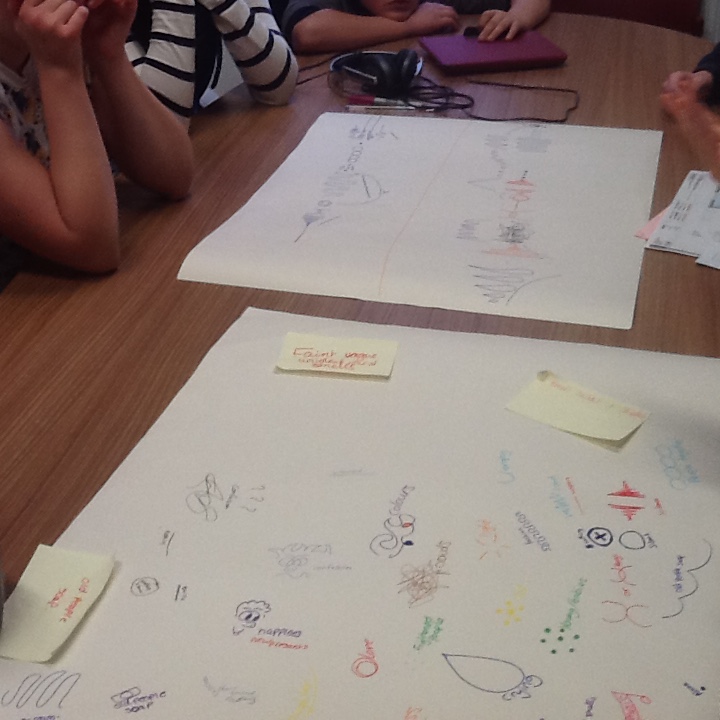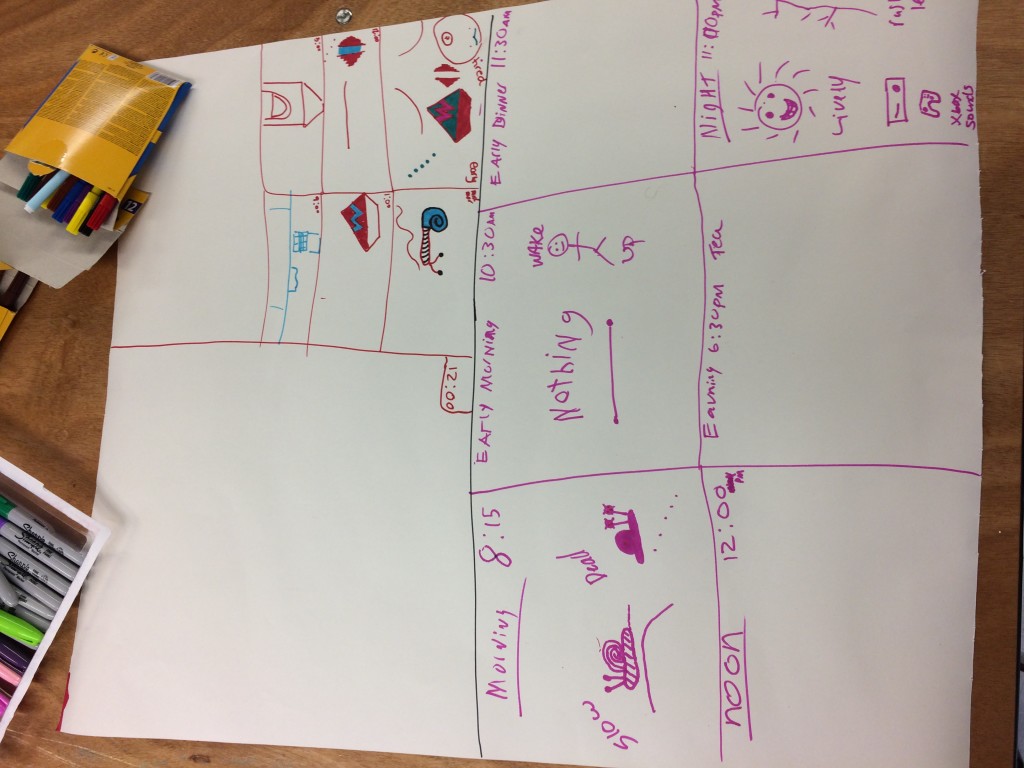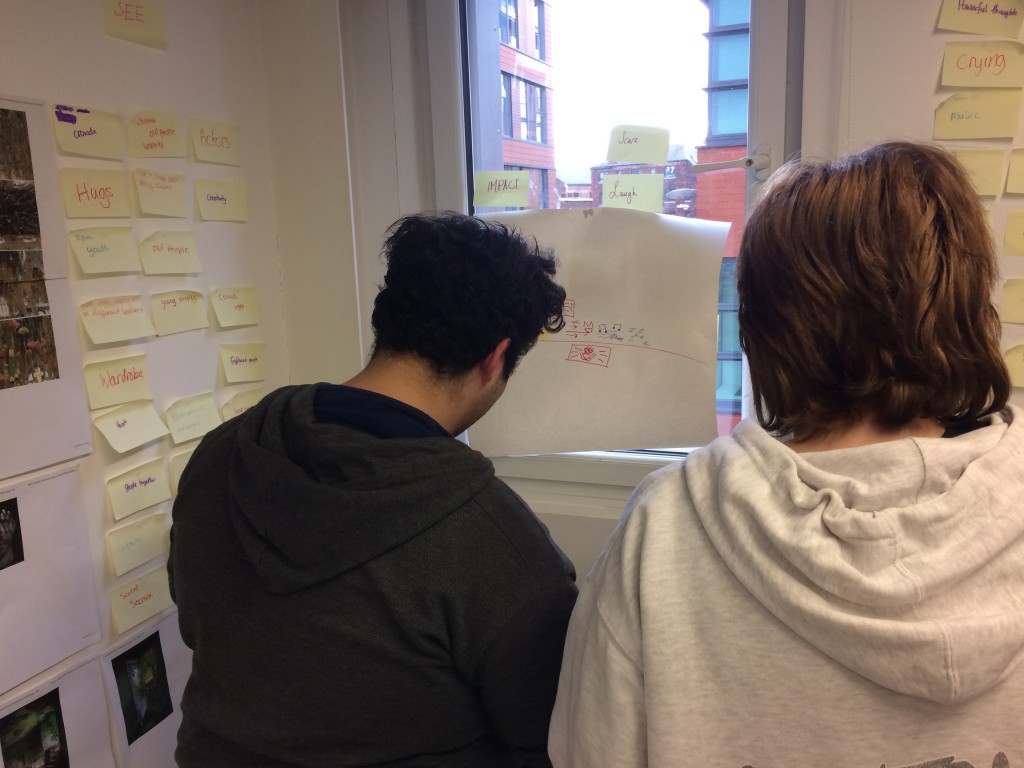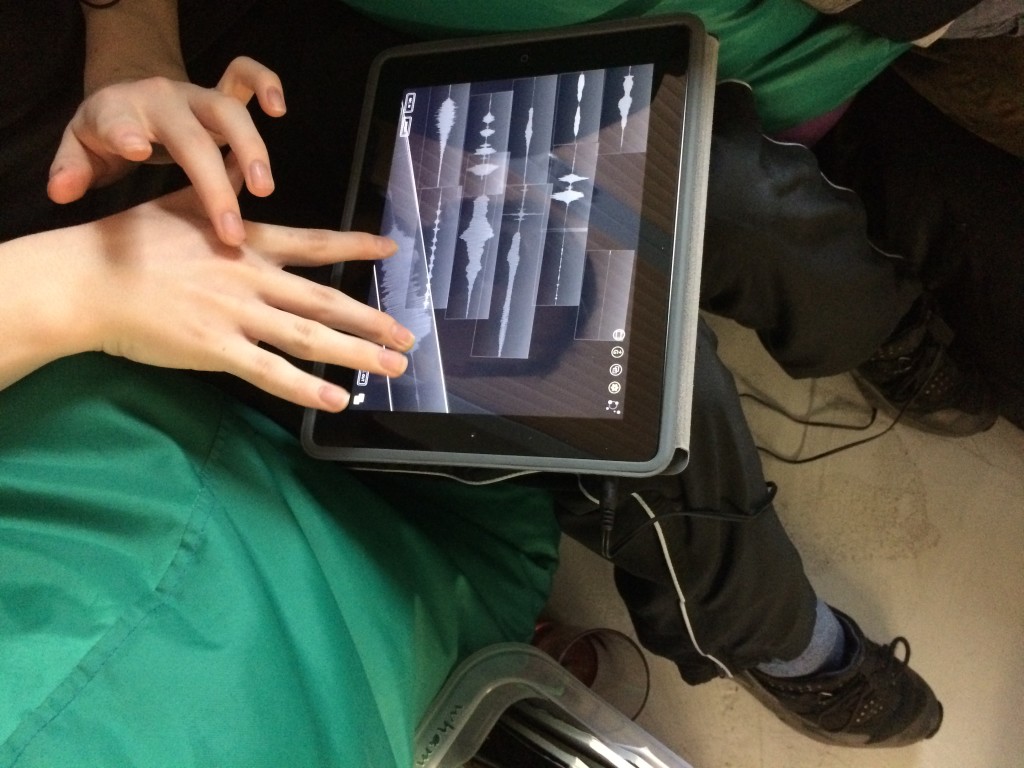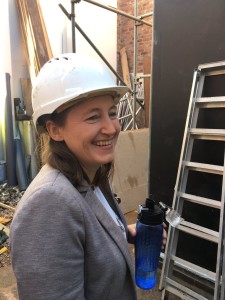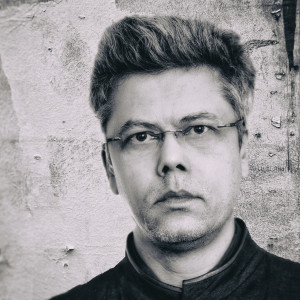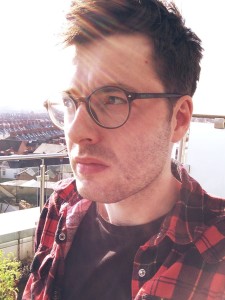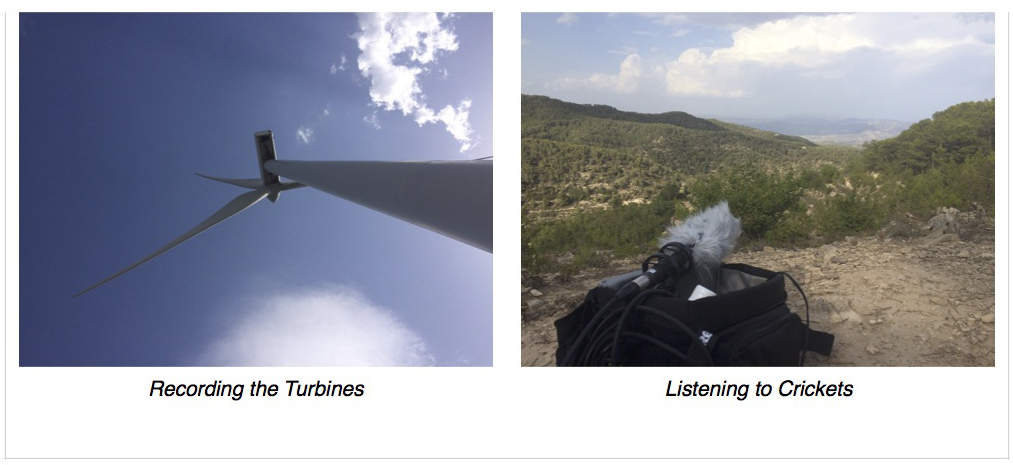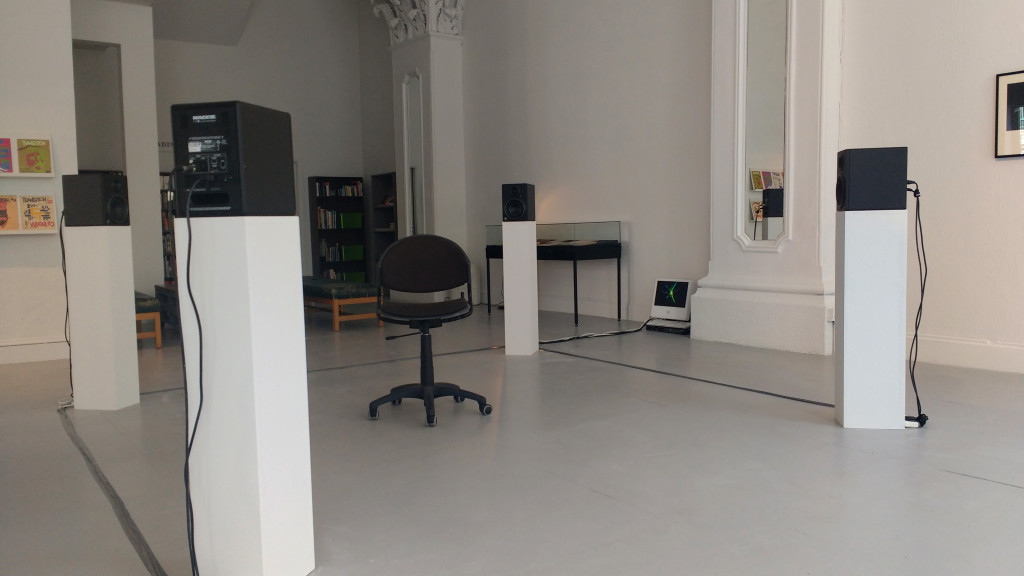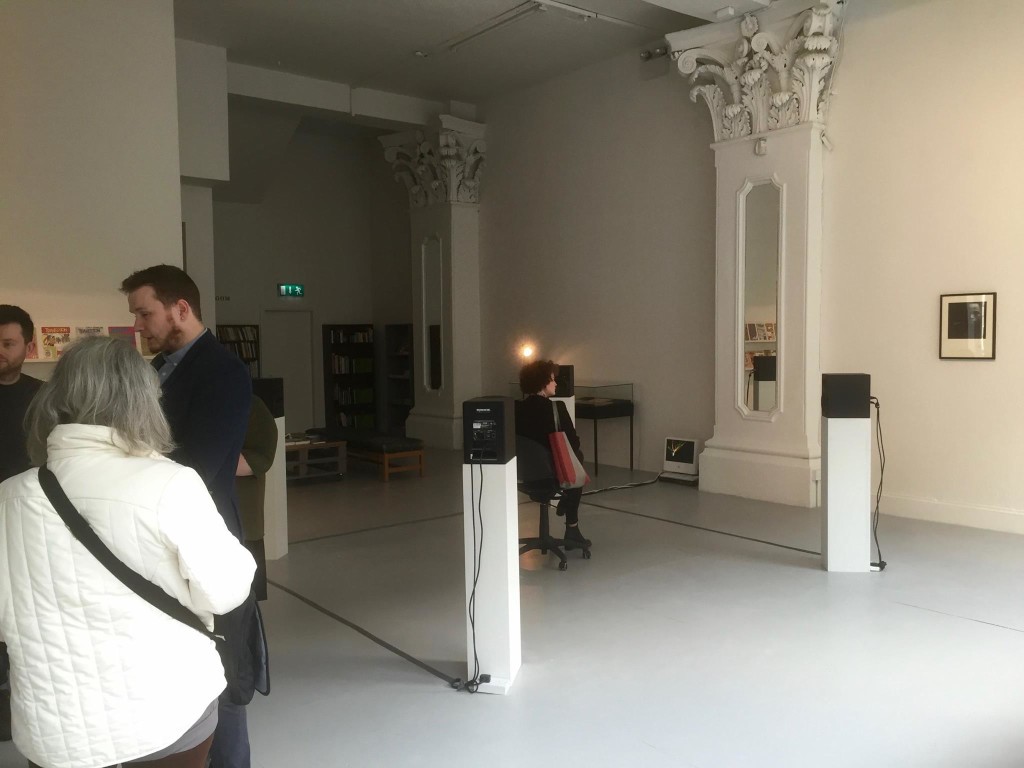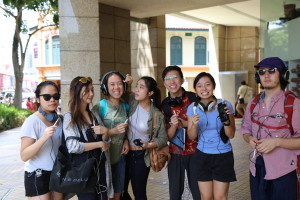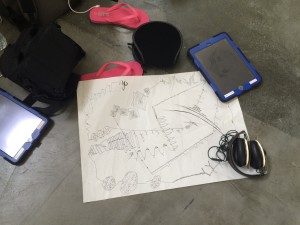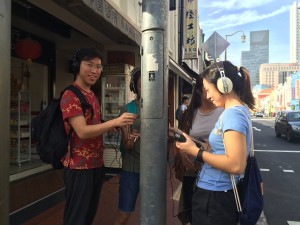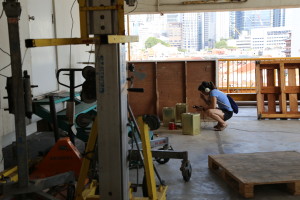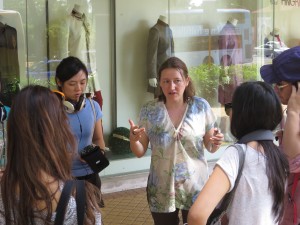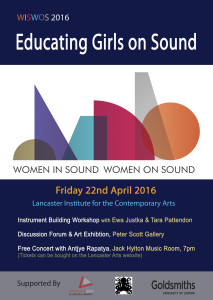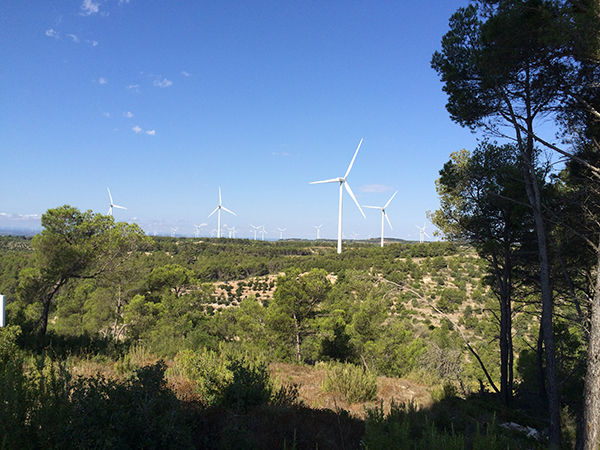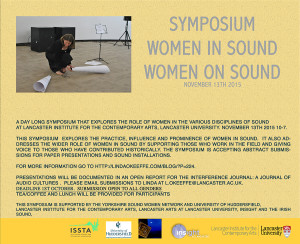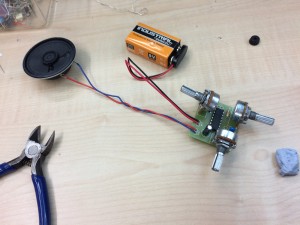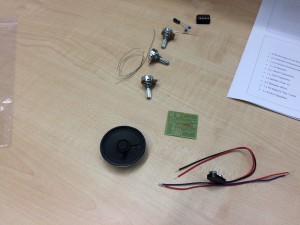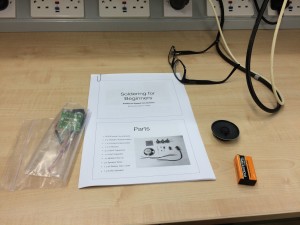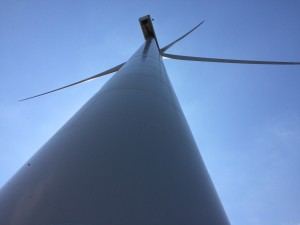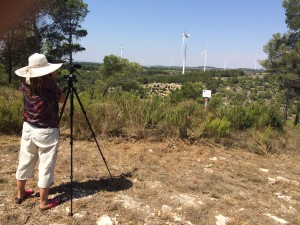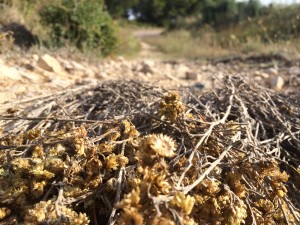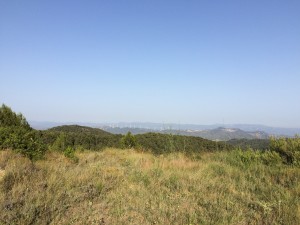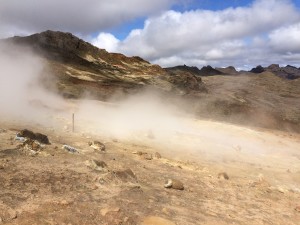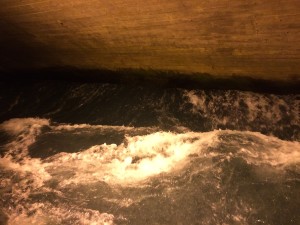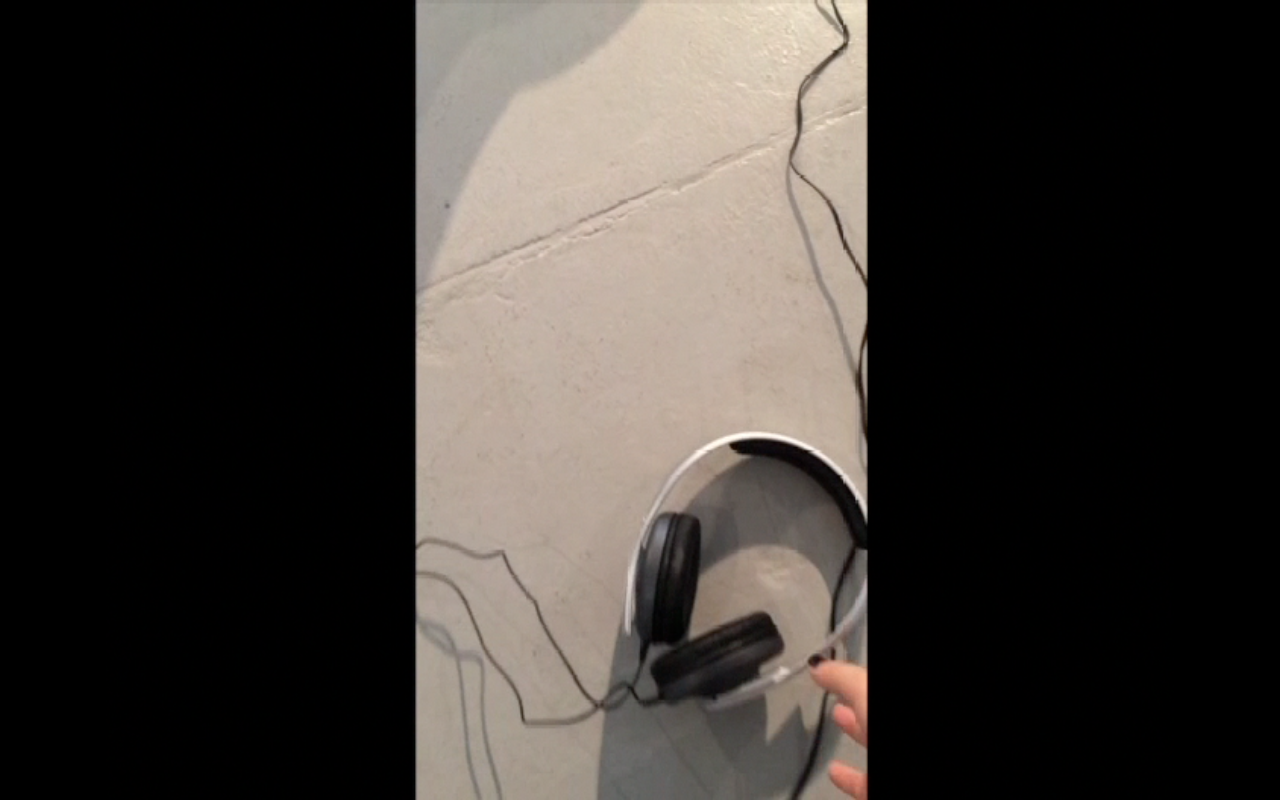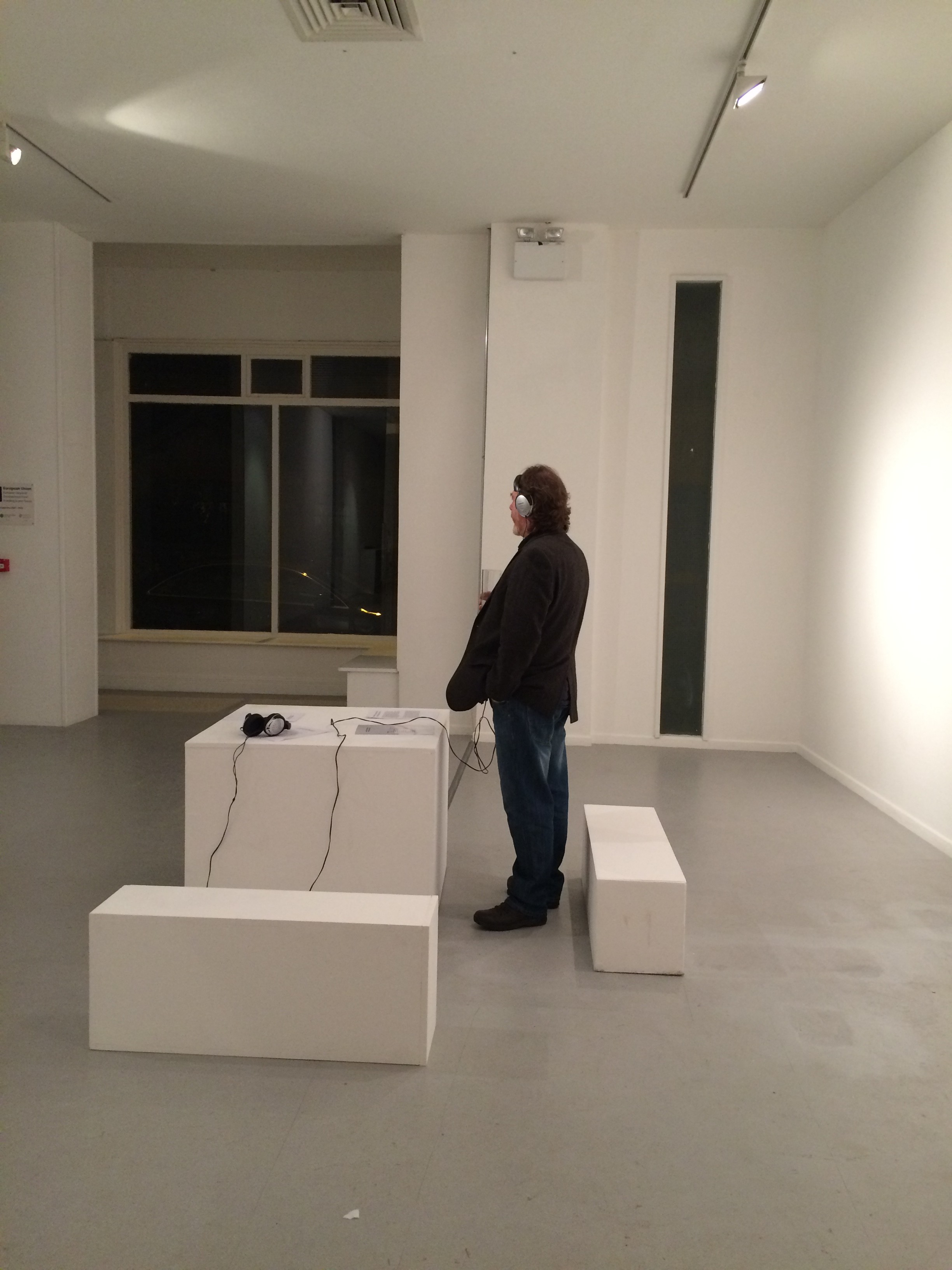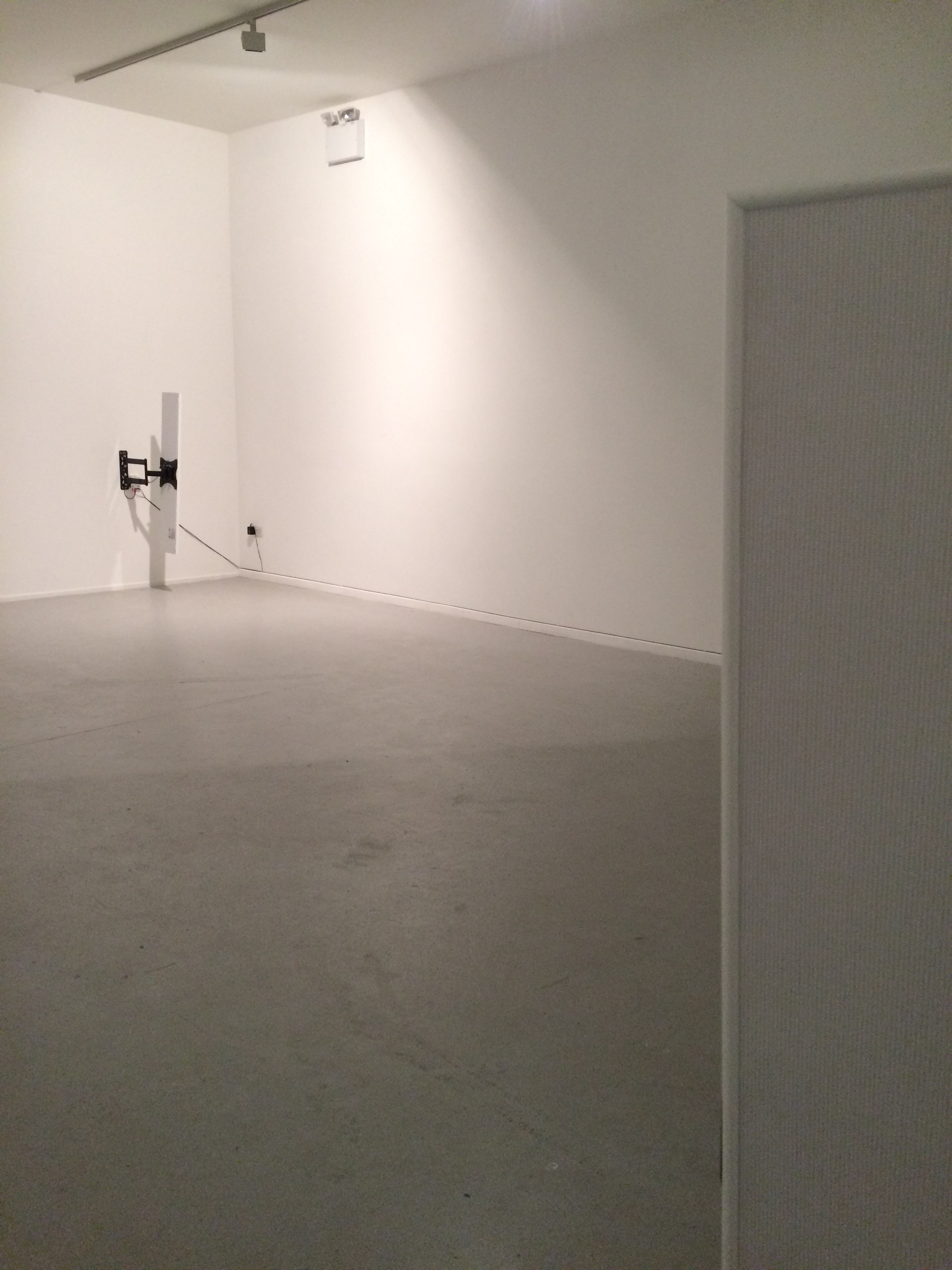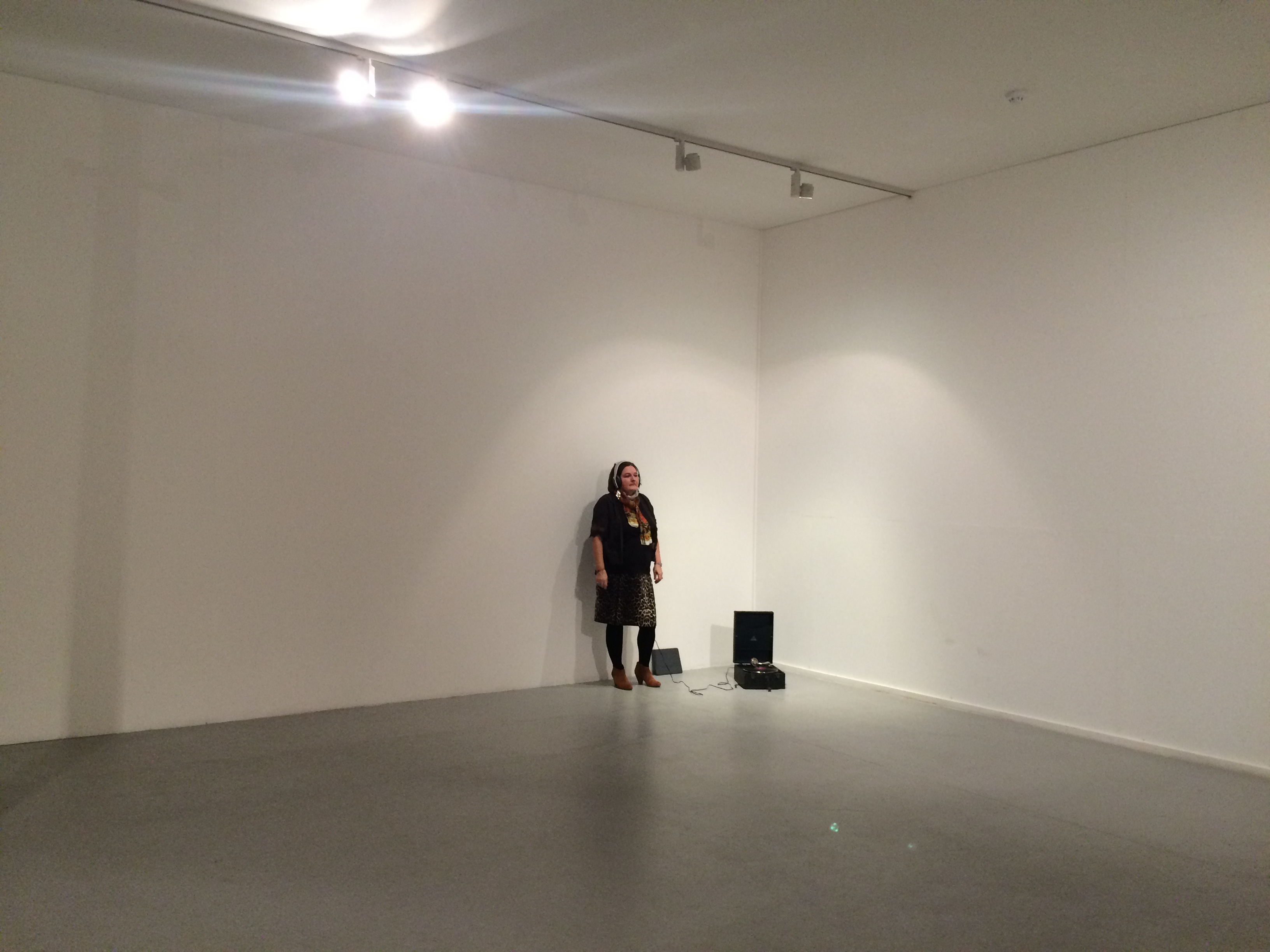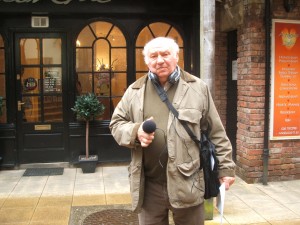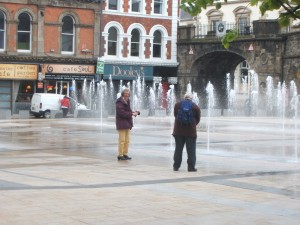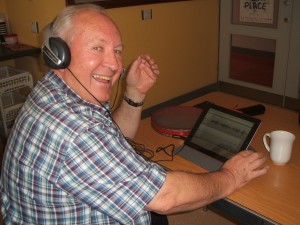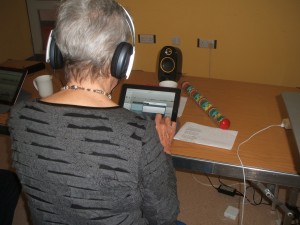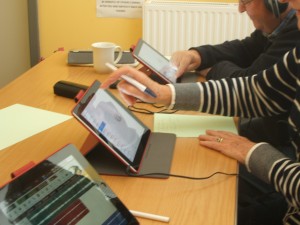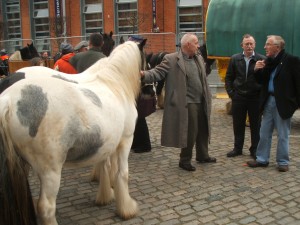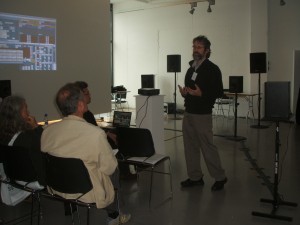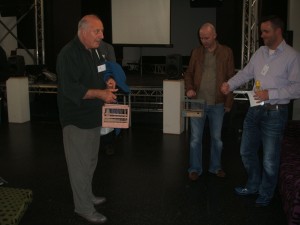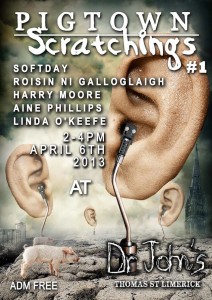Myself and the Non Random Artists collective are at SETI for the next two weeks as artists in residence, we started our residency today, our goal os to explore a variety of themes and concepts related to climate change, habitability, the potential of and ethical use of genetic editing, deep time, interplanetary travel, diseases and the phenomenology of the embodied experiences of human and other than human transformed over time to exists in vastly different environments.
In 2022, I was commissioned by i-Portunus to create a body of work for the Edges residency and the Brighton Art Festival. I engaged in a discursive collaboration with ceramic artist Juss Heinsalu at the Ceramic House Brighton, focusing on the theme of Edges and Peripheries. Supported by Creative Scotland and i-Portunus, this collaboration delved into questions about the nature of life, intelligence, and the anthropocentric nature of these definitions. Their inquiry was an extension of research into the ethics of genetic editing for climate adaptation.
The result was an audio-visual work titled “Continents Drifting.” This piece imagines ancient communication modalities, where hybrid life forms—intertwined with elements like stone, soil, rock, plant, and animal—strive to communicate with us across geological epochs. It reflects on our significant impact on the planet. The work suggests that earth’s elements—earth, stone, soil, rock, shell—might have subtly warned us of our transient existence, which could vanish without a trace if we cause our own demise.
“Continents Drifting” has been showcased at the Alternating Current Festival in Dublin in 2023, the Zuccaire Gallery in New York in 2023, and is scheduled for exhibition at The Wexford Art Centre in Ireland in 2024.
As part of the Hebden Bridge Arts and Ecology Festival Open Space 70, I was asked to create a sgundwlak and sound mapping workshop. I was supported by the amazing Paul Knight, philosopher and land walker, to create a walk that would bring a group of people through a changing landscape of urban, rural and wild, where we would discover the traces of our anthrophony on the bio sphere, and then following this walk create sound maps of this journey. During the walks I introduced my listeners to three female listeners to enhance their listening experience, and to discover different ways of measuring their sonic experience from an ecological, sensory and personal perspective. They were Pauline Oliveros, Hildegard Westerkamp and Rachel Carson. I then explored my own approach to listening developed as part of my research.
Below are some images from the journey as well as some of the amazing maps my participants created. I constructed these little booklets to allow them write some of their experiences on the back, during the walk, and then map on the other side. It was a great day and I am so thankful that being part of the Propeller Ensemble Performance for the same festival allowed me the opportunity to create and run this workshop.
In 2020 I began a conversation with the composer Jack MacNeill of the propellor ensemble. He was interested in the work I had been doing in the field of acoustic ecology and the sound arts, particularly my community engaged approach, my focus on excluded voices, and the way I created outputs from performances, to installations and publications, in order to reach as wide an audience as possible. These conversations struck a real chord, as they allowed me to begin to explore the personal impact the research had on my everyday life. Sometimes to explore difficult topics you step a little outside yourself, perhaps as a coping mechanism. To have such a long and deep conversation allowed for a form of self reflection, and over the course of the past two years, I have placed these thoughts into the performances that Jack and the Propeller Ensemble have created and for which I have been invited to perform alongside with the absolutely amazing ecologist and ornithologist Mark Cocker. So in July this year I performed alongside Mark, Jack and two additional performers from the Ensemble at the Hebden Bridge Festival Open Space 70. We performed together last year at Lancaster Arts, but this felt like an evolution and refinement of how we collaborate on stage. All of this stems from the podcast series Jack created as a result of conversations with a variety of arts, ecologists and theorists, and they are a staggering creation that can be accessed here.
Below is a series of snapshots from that performance, listen through or skip through, but its a lovely piece to watch or listen to.
For best experience listen on headphones, or play on large screen with good speakers, preferably at head height.
In 2022 April, I participated in a collaborative project at the Ceramic House Brighton, with ceramics artist Juss Heinsalu, exploring the concept of Edges and Peripheries. This was supported by funding from Creative Scotland and iPortunus. Through a series of experimental conversations, and text-based communication, we began to ask, ‘what constituted life’, ‘intelligence’, who defined that, and how anthropocentric were our definitions? This was shaped by my own research into using genetic editing, with the Non Random Collective, as an adaptation response to climate change and the ethical implications of that.
What emerged was an idea about how we might take an experimental leap to create new definitions of life, explore new modes of communication, think about how life might have formed many hundreds of thousands of years ago, hybrid forms of life connected to stone, soil, rock, plant, and animal. In response to the theme, I created the film Continents Drifting and Juss, a large scale ceramic work created.
These works are the first in a set or series of works that we will continue to examine going forward, but here is a sample of the works we developed for the Brighton Festival Open House exhibition.
By the second week of my residency in Brighton, myself and my collaborative partner Juss Heinsalu, have begun to explore ideas around the possible evolution of non biological life forms, of moving away from the centering of the human experience for defining life, de-anthropomorphism. We are examining how life forms at the edge, struggling to survive, fighting for every opportunity to exist, procreate, to become a permanent part of an ecosystem.
As humans now live on a precipice, it is 100 seconds to midnight, our very existence is challenged, we wonder how a non human defined entity might try to communicate with us, perhaps a warning of the affects of our behaviour, perhaps they have already warned us, and the slow geological time of communication means we have not heard this communing that has been attempted over thousands of years. We have as Foucault defined, a need to order things, with humans at the top defining and categorising all other forms of life and non living things. Yet our presence here is a matter of seconds in geological time, and while it seems our impact is exponentially greater than it should be for a fragile species, perhaps another entity can remind us that we are a willow the whisp, a trace that might not leave a mark for anyone to explore if we erase our own existence. Perhaps the very earth, stone, soil, rock, shell, that we stand on is/has already warned us.
Our first experiments are to examine the life of soil, sand, rock, remembering how definitions, categorisations of life have changed, evolving with human understandings of what constitutes a biological life form, for example coral as a living breathing life form, a forest as not a space of single trees, but a biodiverse system, mycelium, which connects and communicates and interacts with different species.
Next stages are to give voice/resonance to this communication from geological time, think the Ents and Entish, “You must understand, young Hobbit, it takes a long time to say anything in Old Entish. And we never say anything unless it is worth taking a long time to say.” Lord of the Rings
This research project is funded and supported by i-Portunus and the Ceramic House
As part of my commission with the Huddersfield Holocaust Museum I created a workshop to explore how you can listen for the soundscape of exclusion and inclusion, racial, class, gendered, how you can map these sounds in particular spaces and then create a composition in the form of a graphic score. This workshop included two lectures and a sound walk around Huddersfield, it was snowing just before we left, but the sun and the birds came out just for our walk.
Paying attention to the sounds around us can often make audible audible forces which are intent on creating division in society. Opening our ears to these sometimes subtle, insidious voicing’s and soundings mean we become aware, before it moves in to the visible, of the potential of certain groups acting to creating divides between people and cultures. The Holocaust Museum is a perfect example of how ignoring the mutterings, closing our ears to prejudice, violence, lies, can lead to the most horrific acts humans can perform.
Some wonderful experiences on our walk and in the museum exploring how we can collectively map soundscapes, and creatively transform these maps in scores for potential performances. Some amazing stories emerged in this workshop about personal experiences, which were then mapped to the graphic scores.
In January 2022 I began to develop a commission of sound work under the heading audio guides, for the Holocaust Exhibition and Learning Centre in Huddersfield. I will spend the next several months working with archived interviews, and recording interviews with survivors and reading a lot of work on the Holocaust, in order to develop this body of work. Currently working my way through Peter Hayes Why? Explaining the Holocaust, which is a brilliant book presenting the statistical facts of the time period to counter the narrative that was developed in order to create, what was in essence, a race war.
As for building a soundscape that reflects the museum exhibition, which is also an aesthetic and conceptual body of work, this has been a difficult thought to process, how can I create an art work that reflects what I think but does not in any way make light of this experience.
In 2015 myself and the composer Tony Doyle began a journey through different soundscapes to explore the impact of renewable energy technologies on rural and natural environments. This included travelling to a variety of areas, working with local artists and communities, developing new methodologies and producing, albums, exhibitions, concerts and published papers in the process. What follows below is aspects of that research and the outputs as a series of captured blogs and links to outputs.
Icelandic Recording trip 2015
Travelling to Iceland with Christ Watson to record the Icelandic soundscape in the summer cycle, 24 hours of daylight. Some amazing sounds and scenery. Some interference from planes, tour boats and tourists. Visited a hydroelectric dam, emerged feeling perturbations from the very loud underground vibrations of the plant, recorded the sounds underwater in the river.
Recording in Spain August 2015
This summer myself and Tony travelled to the North East of Spain in the Cataluna region, we were hoping to record the hot soundscape as an opposition to the my cold sounds of Iceland. instead of focusing on what heat does do the sounds of nature, which I did actually explore, we came across a very changed landscape to one we had seen almost 8 years before. The skyline of the Terra Alta region, a spectacular mountain area which is located within the Ribera d’Ebre region, was covered in wind turbines. This beautifully large and graceful machines for harnessing the wind, came to dominate my recordings, images of which can be seen above. The sounds they produced was also amazing, and one wonders how much this affects the wildlife. There is a constant whir, whir, whir, which is hypnotic. These sounds alongside my recordings of the electric energy of Iceland will be intriguing material to work with for the next year.
Acoustic Ecology and Sound Recording Residency – Terra Alta Region, Northern Spain August 2016
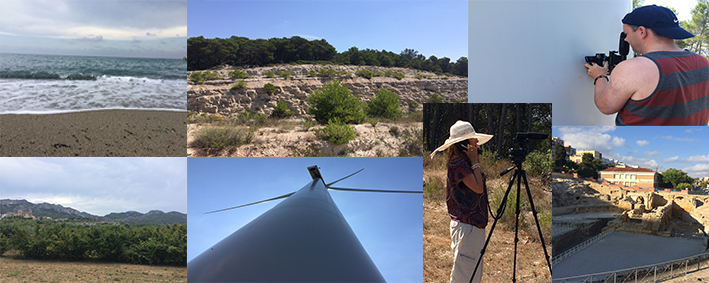
10-day field recording trip in La Fatarella Spain – 9th-19th of August 2016.
Acoustic Ecology Residency 2016
In August 2016 sound artist Linda O Keeffe and Composer Tony Doyle ran a sonic arts residency in the La Fatarella municipality in the northern Terra Alta of Spain. The village is located within a vast mountainous area. During the summer the high temperatures parch the landscape, riverbeds dry up and fallen leaves and branches quickly turn brittle. The surrounding area consists of Finca’s (A piece of rural land, which typically has a farmhouse or cottage present). During the day crickets dominate the soundscape and at night the swallows.
2016 Sound Artists in Residence
The two residents were Robin Parmar and Matt Green.
Robin Parmar explores the poetics of place and memory by way of electroacoustic composition, non-ideomatic improvisation, experimental texts, and film. Works have appeared in Ireland, England, Portugal, Spain, Germany, Sweden, Slovenia, Canada, and the USA. His compositions have appeared on several international labels. Albums include “…between…” (Gruenrekorder, 2014) with David Colohan of United Bible Studies, and “The Drones” (Stolen Mirror, 2013). Recent papers have examined the phenomenology of discontinuity in digital music, the “space” of Joy Division, and the screendance of Angela Conway. Robin lectures on Acoustics, Psychoacoustics, and Modalities of Listening at the University of Limerick. He is a doctoral student at De Montfort University, Leicester.
Matt Green is a lecturer, researcher and site-specific sound artist who holds a Phd in Sonic Arts. Matt’s previous practice includes Resounding Rivers (2010), which was commissioned by Belfast City Council and PLACE, Belfast and explored Belfast’s buried waterways via six concurrent sound installations housed externally throughout the city. In Hear, Out There: Madrid (2008) was a mobile sound work that addressed a culturally impoverished site in Madrid known as AZCA. For this work, Matt and his collaborators received a Spanish Ministry of Culture ‘Culturas 2008’ award. Each of Matt’s installations and mobile works, including those mentioned, are the outcome of an extensive programme of situated activity that includes field recording (the aural equivalent to photography and documentary); community collaboration; and onsite research, design and development.
During the residency we toured the Terra Alta region and the Ebro D’elta, in addition we got to experience festival season in the Tarragonna Region which happens every August. Over the coming months I will update on works created in response to the residency.
Dawn Chorus 7th May 2017 South Walney Nature Reserve
Dawn Chorus on South Walney Nature Reserve from Linda O Keeffe on Vimeo.
As part of International Dawn Chorus Day May 7th 2017 myself and Tony Doyle began a series of recorded walks starting at 4:30 this morning, through the South Walney Nature Reserve in Barrow. There are several distinct nesting sites on South Walney which means you have very different bird sounds as the dawn progresses.
I am not an ornithologist so all I can say for certain is that I have the bird sounds of Great Black-backed Gull, Lesser Black-backed Gull, Herring Gull, Greenshank, Redshank, Short-eared Owl, Eider duck, Canada Goose. The recordings were made in grassland, coastal and pond sites.
Eager ears with more knowledge than me will be able to name the other species.
Performing in Walney May 2017
As part of world Dawn Chorus Day myself and the composer Tony Doyle created a day long workshop for attendees of the Sound Camp at South Walney Nature Reserve, organised by Octopus Collective.
In the evening we performed a new work generated by text performed by the attendees of the sound camp and collected objects.
After a brief introduction to acoustic ecology and listening methods each participant was given a listening meditation (meditation and composition). They brought this on their walks through the reserve. Later, we recorded their texts and a series of sound performances they created with materials they collected as part of the listening meditation and object collection. These were incorporated into a live coded and 3d graphic score performance, see image above.
This performance was broadcast online and performed at the London sound camp. We will have sound and images of the evenings performance to follow.
Presenting papers and artwork at Balance UnBalance Plymouth 2017
This year I presented two papers and and an art work at the balance unbalance conference at Plymouth university. You can download the paper to here.
Listening To Ecological Interference: Renewable Technologies And Their Soundscapes
Abstract
(This proposal is linked to an art proposal for the conference)
The sounds of modernity are increasingly moving into natural habitats. With an influx of new technologies designed to utilise and extract material from nature, the natural soundscape is becoming masked by the mechanical and technological. This article addresses an experience of listening and recording which took place in the summer of 2015, within two different natural landscapes: the southern region of Iceland and the north eastern region of Spain. The field trip exposed a significant keynote sound within each space; a sound produced by renewable technologies. The sounds produced by these technologies, wind farms and hydroelectric power stations, were significantly louder than had been expected. This lead to an analysis of whether the soundscapes of environmentally friendly technologies can or should be critiqued, even if they have a demonstrable impact on the ecosystem.
SOUNDS LIKE HER: HYBRID SOUNDSCAPES I, II, III, IV, 2017

Sounds Like Her (2017), curated by Christine Eyene, produced by New Art Exchange. Photography: Bartosz Kali
In October this year the Sounds Like Her show, curated by Christine Eyene, was launched at the New Art Exchange Gallery in Nottingham. I was one of the commissioned artists in this show which was looking to “broaden existing approaches to sound art, and contest Eurocentric and patriarchal frameworks to sound art” (Eyene 2017). My work, a four wall drawing and sound installation piece, see pics, explored the impact of renewable technologies on the social and natural soundscape.
Each wall drawing is both sound map and graphic score based on four different spaces I have explored over the past 4 years, Beijing, China, Walney in Barrow, UK, The Terra Alta Region in Spain and Iceland. The sound work a 5 .0 piece was spatialised by the composer Tony Doyle. The exhibition also featured works by Ain Bailey, Elsa M’bala, Sonia Boyce, Christine Sun Kim and others. It was a privilege to be part of such a far reaching and important exhibition. The work will continue to be exhibited till January 2018 and will then tour to other venues, those spaces TBA.
Silent Spring Album Launch 5 November 2019
Recently released my new solo album Silent Spring with the label Flaming Pines. This work began over three years ago, with each track, (there are three) created as a meta and physical response to embodied sonic arts research. The album info is below for details from the Flaming Pines site, and the link to listen and purchase tracks or the entire album, is also below. Please purchase to support labels like FP, the great Kate Carr who owns this label, is an invaluable member of the sonic arts community and we need people like her.
https://flamingpines.bandcamp.com/album/silent-spring
Listen to the Wire’s Frances Morgan introduce one of the works on air.https://www.mixcloud.com/TheWireMagazine/adventures-in-sound-and-music-hosted-by-frances-morgan/
Silent Spring is a meditation on human and natural sounds, new technologies, and our relationships with other species.
It comprises three pieces Icelandic Reveries, Silent Spring and Strange Birds, composed from recordings taken at a hydroelectric dam in Iceland, wind turbine farms in the Terra Alta region Spain and acts of sounding and listening in the Brazilian Amazon, respectively. The first two pieces reflect on the impact of new renewable energy sources, tracing not only the sonic impact of these structures on other species, but the ways in which the soundscape is able to communicate broader structural and environmental changes associated with the introduction of these technologies. In Terra Alta, in Spain, where Silent Spring was composed Linda writes:
“The introduction of wind turbines has changed the natural soundscape, with the constant presence of their whirring sound. The crickets are louder, the birds quieter, the change in economic practices from farming to wind turbine systems on the landscape has resulted in fewer jobs for young men and women with a radically reduced agricultural economy. The villages become quieter with young people moving to the cities. This work documents the different spaces of sound in the region from country bars, to festivals, crickets to turbines, it’s a collage of the sounds that are disappearing over time with the emergence of one dominant tech sound.”
While the final piece, which incorporates recordings taken in the Amazon, is centred on listening to the mixed natural and human soundscapes of the Amazon in the state of Amazonas in Brazil, a process which culminated in an act of connection, a scream into the forest, met with screams in return.
credits
released October 14, 2019
All tracks by Linda O’Keeffe
and Mastered by Tony Doyle
Photography and design: Kate Carr
Special thanks: I would like to acknowledge the support of arts council England in developing the work Strange Birds. A special thanks also to Rebecca for screaming with me in the dark.
I would also like to thank Tony Doyle for doing the final mastering of these audio tracks, for listening to every iteration, and giving amazing feedback.
This piece was commissioned for the Myriad Materialities Conference, 9th June 2021, for University of Oxford’s CPAGH (Colonial Ports and Global History) Network
This work examines the way in which a language or sound evolves, becomes transmuted, muted or disappears as it moves beyond the centre, or source of its origin as a result of colonial transformations and post-colonial forgetting.
Growing up in Ireland I resisted having to learn Irish in school, I didn’t understand the point, no one I knew spoke Irish, the common tongue was English, and there was nowhere in the world where having this language would benefit me. I felt a similar antipathy towards Irish music, it felt commodified, created for tourism, a specialised sound for a particular audience. Nothing to do with me. However, when I visited the Gaeltacht regions in Ireland, or heard spoken Irish in a bar, I felt a pull, an envy, an anguish, a loss at not being able to speak or understand my own language. I have felt, in recent years, as an economic migrant, the same experience towards the sound of my culture, from music to poetry, to prose. In researching for this commission, I have explored the history of my language and culture as it has spread from the centre, moving across borders as we left for work, for safety, for independence. When we think of things transported across water, across land, brought to different countries, we focus on things, objects and goods, but there are other kinds of materiality’s, which move from port to port. Language and sound are a part of these myriad materials that when forced to move, either evolve or merge with other cultures, or over time and across space, disappear. I worked with the composer and musician Tony Doyle to develop this piece for the CPAGH commission.
I would like to thank those who have supported the development of this art work, William Howard Lecteur de Gaélique from the Université de Bretagne Occidentale, who has an encyclopaedic knowledge of the history and evolution of the Irish Language, Dr Clare Downham and Dr Eoghan Ahern from The University of Liverpool’s Institute of Irish Studies, for facilitating in the translation of text from English to Irish, and to the composer and performer Tony Doyle for performing the sounds and music for this piece. I also want to thank those who have contributed their voices across time and space, to this work.
So thrilled that I received a funding grant from Creative Scotland to develop an R&D project with two collaborators, Tony Doyle and Ashley James Brown, we have become the collective known as Non-Random (website to come soon). We have been awarded £33000 to spend a year undertaking research and development for a body of early stage art works in response to the gene editing technology CRISPR. This is an incredible opportunity to develop an idea we’ve been working on for 2 years. See below for info on our project idea. We will be creating a number of events, talks and and interactice online art works for experimentation going forward. We will be sharing on our new social networks soon.
Evolving Ourselves
Evolving Ourselves with Unnatural Selection is a new collaborative project between artists and researchers that will explore and present some of the ethics and future implications of gene editing through a digital multi-arts approach.
Presented primarily via an online digital platform incorporating machine learning techniques and a variety of cutting edge digital arts tools, the project looks at bringing together research, data science, visual arts, sound and language into an experimental toolkit and set of frameworks that presents the project findings to a wider public audience in the shape of playful online interactive interventions. The project fosters an open dialogue between artists, disabled voices in the community and researchers that seeks to navigate the ethical, empirical and creative challenges around the sensitive topics, while bringing the artistic concepts and thoughts into a general public audience’s hands for investigation and conversation.Through a participatory approach, the project gives a focus on giving underrepresented voices in the community a chance to shape and share their experiences through creative artistic expression.
The project will serve as a springboard for future creative arts investigations into how the arts and cultural collectivity can be vital in helping share some of the world’s most complex scientific problems.
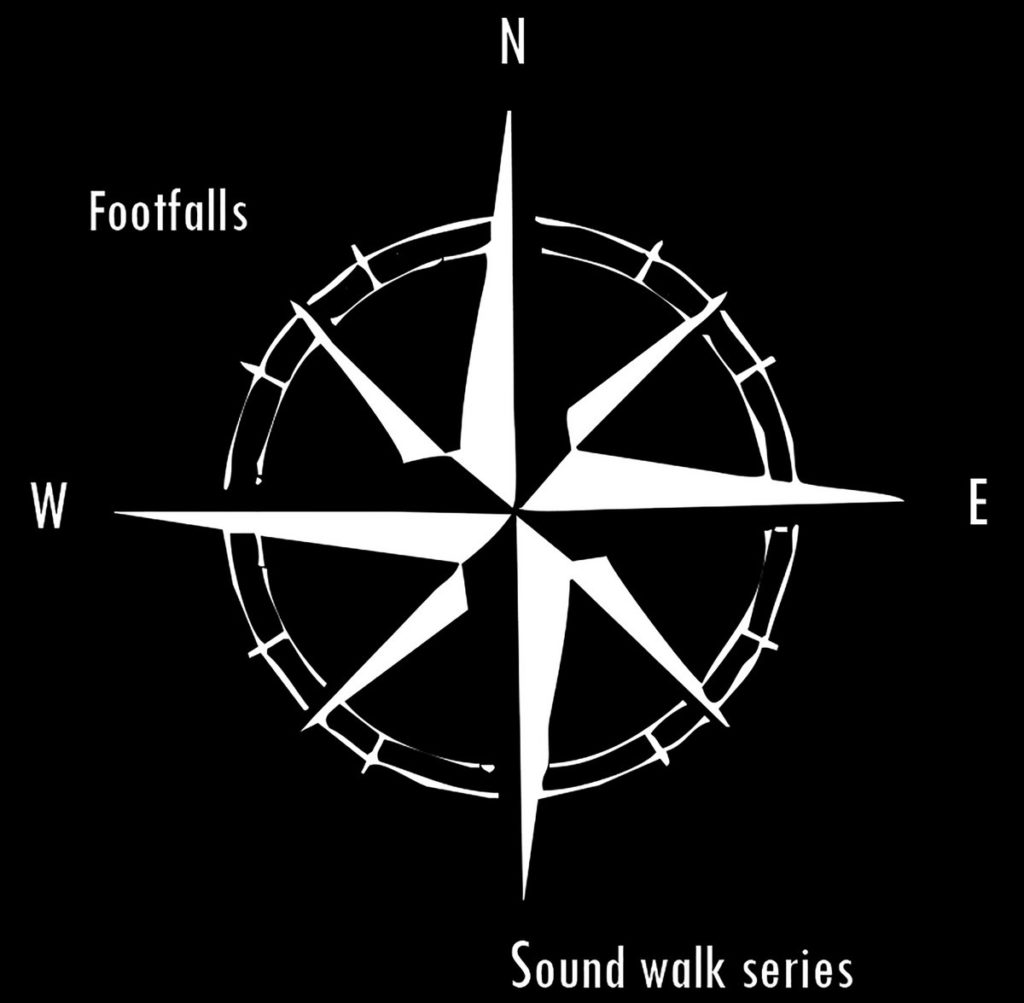
In October 2020 the record label Flaming Pines asked me to contribute a track to the 2nd edition of the album Footfalls. I had spent some of the summer in lockdown in the rural mountain village of La Fatarella northern Spain. It had been difficult to summon the interest to do field recording while everyone was scared of dying, the focus of my time there had been to continue recording the wind turbines in the region, however, I became more interested in the little moments of celebration taking place in the village. This piece was a document of experiencing those moments while trying to listen to the soundscape of wind farms. Click Here listen to the work.
On the 24th of October the performance Women in Space took place in the Edinburgh Sculpture Court at Edinburgh University. This piece co-designed by myself, Sophia Lycouris and Isabel Nogueira involved bringing a selection of women together, artists, performers and theorists, to occupy a space shaped by patriarchy and colonialism. Our performance was inspired by an ideal to bring only the voices, sounds, bodies and text of women into the space. It was part planned, using text to inspire action and activity, and interpretive, to allow these actions to encourage others. Our performance also focused on the gaze, instead of being observed as performers, we reached out to our audience, spoke to them, encouraged them to participate, and we looked at and spoke to each other.
This performance followed from a visit and talk given by Prof Isabel Nogueira at the School of Art, Edinburgh University. She discussed the role of gender within Brazil in shaping women’s relationship to performance, music and technology. She also spoke of the exclusion of women of colour and ethnic groups of Latin America and the work she has done on gender and performance. I have worked with Isabel on a number of projects in Brazil and was incredibly excited to create this performance in Brazil. Women participatring included other lecturers from the university, PhD and postgrad students from the school of art and the school of art history. To watch a section of the performance take a look at the vimeo link.
On the 15th of July this year (2019), I had the pleasure to work with a group of amazing women at York art museum on the devlopment of a gendered sound mapping project. We explored how sounds can be interpreted, produced or designed for a particular gendered experience. We also discussed how sounds might not fit into any categories of gender, but be of themselves. This workshop raised many questions about what gender is, how sound is learned, how we develop our ability to interpret what we hear, and how we can map or trace that experience.
Feedback from the women who participated in this workshop lifted my soul and made me realise how important it is to keep working with women on ideas around sound, gender, memory and making.
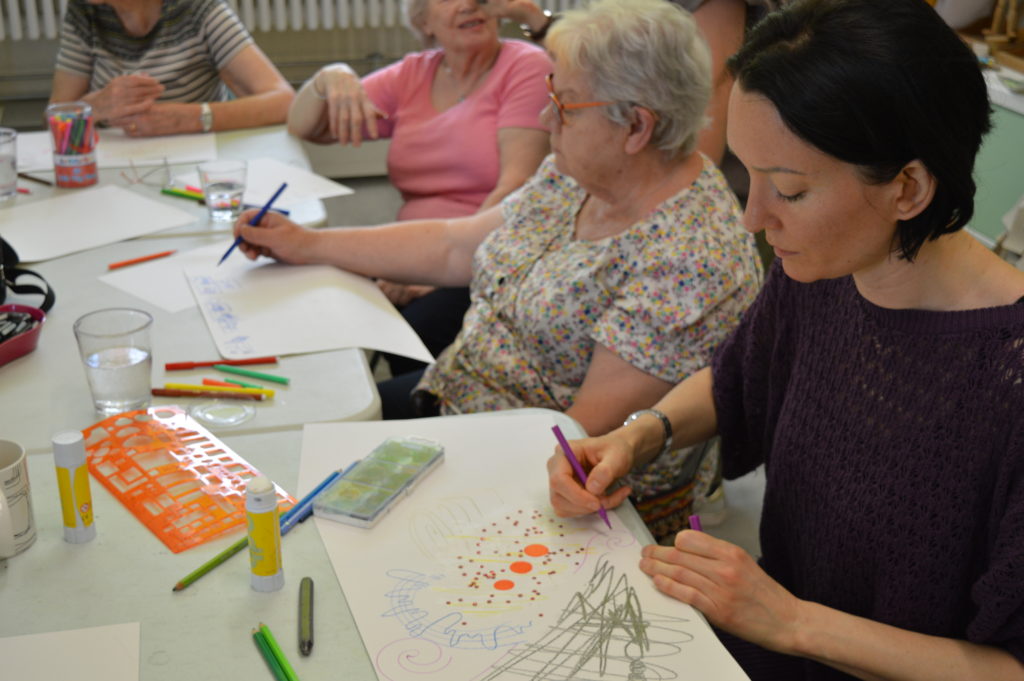




Recently released my new solo album Silent Spring with the label Flaming Pines. This work began over three years ago, with each track, (there are three) created as a meta and physical response to embodied sonic arts research. The album info is below for details from the Flaming Pines site, and the link to listen and purchase tracks or the entire album, is also below. Please purchase to support labels like FP, the great Kate Carr who owns this label, is an invaluable member of the sonic arts community and we need people like her.
https://flamingpines.bandcamp.com/album/silent-spring
Listen to the Wire’s Frances Morgan introduce one of the works on air.
Silent Spring is a meditation on human and natural sounds, new technologies, and our relationships with other species.
It comprises three pieces Icelandic Reveries, Silent Spring and Strange Birds, composed from recordings taken at a hydroelectric dam in Iceland, wind turbine farms in the Terra Alta region Spain and acts of sounding and listening in the Brazilian Amazon, respectively. The first two pieces reflect on the impact of new renewable energy sources, tracing not only the sonic impact of these structures on other species, but the ways in which the soundscape is able to communicate broader structural and environmental changes associated with the introduction of these technologies. In Terra Alta, in Spain, where Silent Spring was composed Linda writes:
“The introduction of wind turbines has changed the natural soundscape, with the constant presence of their whirring sound. The crickets are louder, the birds quieter, the change in economic practices from farming to wind turbine systems on the landscape has resulted in fewer jobs for young men and women with a radically reduced agricultural economy. The villages become quieter with young people moving to the cities. This work documents the different spaces of sound in the region from country bars, to festivals, crickets to turbines, it’s a collage of the sounds that are disappearing over time with the emergence of one dominant tech sound.”
While the final piece, which incorporates recordings taken in the Amazon, is centred on listening to the mixed natural and human soundscapes of the Amazon in the state of Amazonas in Brazil, a process which culminated in an act of connection, a scream into the forest, met with screams in return.
credits
released October 14, 2019
All tracks by Linda O’Keeffe
Mastered by Tony Doyle
Photography and design: Kate Carr
Special thanks: I would like to acknowledge the support of arts council England in developing the work Strange Birds. A special thanks also to Rebecca for screaming with me in the dark.
I would also like to thank Tony Doyle for doing the final mastering of these audio tracks, for listening to every iteration, and giving amazing feedback.
This October I was delighted to release two albums with Brazilian net labels Estranhas Ocupações and Mansarda Records. The newest album with Estranhas Ocupações (EO) was a collaboration between myself and Isabel Nogueira that began in October of 2017 and finished in September 2018. We finalised these audio ideas while working together in Brazil this summer. The record explores the text If I Were Me/Se eu fosse eu, by the Brazilian poet Clarice Lispector. This was an important text to explore for both of us as we were beginning a large scale research project exploring gender, performance, the body and space, and the idea of exploring a text that asked what would someone be, if ideas about who we are supposed to be in a society were removed, in particular notions about gender.
For this album we created a sound piece in four movements using voice, synthesizer, live coding and field recordings. We each explored the subject of If I Were Me, proposed by the author, and were supported in this examination of the text by members of of the research group ECOAR (A research group which explores Body, Art and dance Studies from University of São Paulo, Brazil). We created one particular sound design for their performance If I Were Me which was performed in Sao Paulo in September 2018, coordinated by the choreographer Marilia Velardi. Then we were asked to create an album for EO which allowed us to break the work up in to distinct ideas exploring the theme. This net label allows for free streaming and downloading and can be located here.

Ciclo Sônicas # 5, released September 2018, click here to download
As part of a new approach to performing works of sound, myself and Isabel Nogueira began a research residency in July, in Brazil, which concluded on the 12th of September. We developed a number of pieces inspired by feminist approaches to sound, space, the body and technology for which we were developing over this time. We also collaborated with a female choreographer on a work, like the one below, called Se eu fosse eu, If I were me, inspired by the writer Clarice Lispector. One aspect of our research was to work with new technologies and explore sound making as a conversation between two women and the audience. What preceded each performance was a constant dialogue about the above themes, workshopping with women, giving talks on gender and sound in Sao Paulo, Manaus, Rio de Janeiro and Porto Alegre.
We also released an album with Mansarda Records, with two other women, Em extinção and Input Nulo, the album Ciclo Sônicas # 5 can be found here, and the tracks are free to download.
Performing Se eu fosse eu (If I Were Me) with Isabel Nogueira at Lugar in Porto Alegre, Brazil*
*VIDEOS BELOW (REFRESH IF YOU CAN’T SEE)
Performance by Linda O Keeffe & Isabel Nogueira at Lop Lop in Sao Paulo 2018
In July 2018 I travelled to Brazil to work with the sound artists and professor of ethnomusicology, Dr Isabel Nogueira. We began a discussion in October 2017 about what it would be like to collaborate on multiple levels, from working as feminists engaging with communities of women to explore sound and technology, to working together as artists to transform our practice.
The details of our extensive community outreach work, which is part of the Women in Sound Women on Sound long term project, will be uploaded shortly.
Since the 9th of July we have created a number of new performance based works, which focus on movement, sound, technology and space. We have performed these works in Porto Alegre, Sao Paulo and Rio de Janeiro. Additionally, we have focused on gesture and interaction as a process of embodied performance working in collaboration with the composer Tony Doyle to develop works in SuperCollider using the Wii remote controller. This has been quite a transformative process to engage so intimately with technology, while collectively exploring feminism in the arts, in space, with women.
We have a number of performance projects still to come, on the 18th of August we presented a collaboration with the dance group Pesquisa Qualitativa em Cena called If I Were Me at Espaço Núcleo in São Paulo. Myself and Isabel began developing the sound for this work in 2017, starting with texts, images, video and sounds. We have since created a series of performance pieces based on the concept of If I Were Me, based on the titular poem by acclaimed Brazilian writer and poet Clarice Lispector. We have drawn on this text as a philosophical basis for the beginnings of a feminist ethnography and pedagogical study.
While in Porto Alegre I have continued to develop my visual arts practice through graphic score compositions. I have become increasingly interested in the invisibility of female bodies in public spaces, particularly homeless, black and native South American women and children. As a sociologist it is impossible to work or walk through a space and not be aware of certain social conditions. Impossible to ignore them when everyday they lie or sit on the streets. Conversations with Brazilian women have been incredibly eye opening about the extreme divisions of class and ethnicity in this country. I was aware through media and literature of some of these conditions but not the extent. I began an artist in residency with Isabel in La Foto Galeria in Porto Alegre and will continue to work there till I leave on the 12th of September, working on these graphic scores as well as our collaborative projects. This is my first time working with acrylic in the creation of scores and it is a very exciting process.
Myself, Isabel and Rebecca Collins will host the Gender Symposium at La Foto Galeria on the 6th of September, this promises to be an amazing event.
I travelled to Beijing on the 8th of July to start working with young women on sound in the arts at Beijing Foreign Studies University, where I am a visiting Professor, focusing on digital creativity, performance, coding and the soundscape. It’s been really exciting, as I have also started to develop a new body of work as well as a continuation of my series Hybrid Soundscapes. More to follow as I develop this practice.
So delighted and excited that I received the arts council International Travel Award to undertake a large artistic research project with Prof Isabel Nogueira and Dr Rebecca Collins.
While there we will explore the subject Sounding the Feminist Body examine new approaches to exploring the history of women’s participation in the sound arts in Brazil, develop new practice based techniques, resulting in the development of a new body of work, and an innovative methodology for community outreach projects. The visit includes network meetings with curators, producers and activists in Salvador, Rio De Janeiro, Sao Paulo and Amazonia. Activity in Brazil is supported by a follow up meeting in the UK to present talks, performances and workshops.
So far our schedule is pretty busy, but looking forward to meeting up with many sound artists, composers, performance artists and community groups.
In December 2017 myself and artist Slavek Kwi (AKA Artificial Memory Trace) released our second collaborative album Chooltd. Myself and Kwi have been working together for over 8 years on what can only be described as slow sound art works. We combine the audio pictures of our lives to create new sound worlds built on personal everyday experiences, events in our worlds and our love of sound in general. Below are the liner notes for the album on Bandcamp, please support our work by purchasing the album for yourself or encourage your University library if you have one, to buy the album for students and researchers.
Liner Notes
I wanted to share sounds that explored the hot and cold nature of landscapes, a number of the sounds mixed were based on recordings of spaces fundamentally shaped by their extreme weather from the cold landscape of Iceland with it’s hot interior geology, and the Mediterranean landscape of Spain, with it’s parched yet abundant ecosystem.
The work progressed from these beginnings to exploring hot and cold natures, hot and cold feelings, metaphors of life and death, family and isolation. Hot and Cold became an anagram of different emotive and societal similes.
Slavek Kwi:
First thoughts … HOT COLD … hot becomes cold … cold becomes hot … feeling … feelings. I am wondering how we can distinguish in the realms of sound in between the two. Is it very personal feeling linked to this particular situation, … a reference to something associated?
… and again, re-wording_unfolding: CHOOLTD … scrambled. Actually, I have absolutely no idea how to differentiate clearly in between HOT and COLD within sounds. However, I am happy to explore… more
credits
Note: The composition is designed as 4-channel piece. You can hear stereo version as 1st track and then there are available stems for 4-ch version, if you wish …
Cover design, photos and collage: Linda O’Keeffe
Final design: Slavek Kwi
As part of the Sounds Like Her exhibition at the New Art Exchange (NAE) in Nottingham I was commissioned to run a two-day workshop with 15 teenage girls from the Nottingham Girls Academy.
Over the two days the girls recorded the soundscape of Nottingham, created sound maps, learned about the social and cultural significance of sound, explored women’s contribution to music and sound art, learned how to create graphic scores for voice and electronics, performed live with voice and finally generated performances of their score using a granular synthesis application. It was a pretty busy two days, bit a fantastic experience for all. NAE were brilliant in supporting this event, providing a space and technology for all the activities and gorgeous tasty food for each day.
See below examples of the activities and work produced by the girls.
In October this year the Sounds Like Her show, curated by Christine Eyene, was launched at the New Art Exchange Gallery in Nottingham. I was one of the commissioned artists in this show which was looking to “broaden existing approaches to sound art, and contest Eurocentric and patriarchal frameworks to sound art” (Eyene 2017). My work, a four wall drawing and sound installation piece, see pics, explored the impact of renewable technologies on the social and natural soundscape.
Each wall drawing is both sound map and graphic score based on four different spaces I have explored over the past 4 years, Beijing, China, Walney in Barrow, UK, The Terra Alta Region in Spain and Iceland. The sound work a 5 .0 piece was spatialised by the composer Tony Doyle. The exhibition also featured works by Ain Bailey, Elsa M’bala, Sonia Boyce, Christine Sun Kim and others. It was a privilege to be part of such a far reaching and important exhibition. The work will continue to be exhibited till January 2018 and will then tour to other venues, those spaces TBA.
Sounds Like Her (2017), curated by Christine Eyene, produced by New Art Exchange. Photography: Bartosz Kali
Spain 15-16. One of 4 Graphic Scores/Sound maps, which will be placed on each wall in the gallery with a spatial surround sound work.
This October I will be exhibiting a new work at the New Art Exchange Gallery, Nottingham as part of the show Sounds Like Her, curated by Christine Eyene. This is the second exhibition in which Christine has curated my work and I am delighted to be part of it. In addition, I will be running a series of workshops for young girls as part of my Researching Women in Sound in a Box project for Women in Sound Women on Sound and hosting a Sound Walking and Deep Listening Day in Nottingham which will begin at the Gallery. Dates to be announced soon.
This work is based on three years researching the impact of renewable technologies on rural and natural sonic environments.
The research was triggered by an experience in Iceland in 2015 while recording the interior sounds of a hydroelectric power station. The sounds produced by this structure permeated both the interior and exterior spaces, including beneath the river, within the landscape and within my body. This embodied experience produced feelings of distress and physical nausea. In addition, this large scale structure seemed to employ few people to operate it offering no potential economic opportunities for locals within Iceland, a country now dependant on Hydro power.
This raised questions about the development of new technologies to tackle climate change, and which for a variety of reasons might not be examined for potential detrimental societal or environmental impacts. This is in part because they are seen to be better than oil, gas, coal etc.
That same year I began documenting the impact of the large wind farms of the Terra Alta Region of Northern Spain which continued into 2016. And this year I began to explore the societal impact of the wind farms in the North Atlantic Ocean off the coast of Barrow in Furness in the UK.
Finally, this summer was spent in China exploring the soundscape of both the rural and urban Beijing Soundscape. The Chinese governments goal of being the largest producer of renewable energies on the planet lies in stark contrast to its over populated cities and high use of coal and oil in industry.
This art work represents the soundscapes of four different spaces, a combination of the sounds of renewable technologies, rural and natural soundscapes, the sounds of communities and urban noisescapes. The combined graphic score/sound map and sound work represent a composite of my time spent in each location. Although each wall is located within a different location, in total the work is an holistic representation of the non-linear way in which sound moves through a space and has an impact beyond its origin.
In January this year myself and Rebecca Collins were awarded the Research in a Box grant to develop the Researching Women in Sound in a Box on the new WISWOS website.
The Women in Sound Women on Sound organisation will be launching both the Research in a Box project funded by Lancaster University and our new website on September 7th 2017. The website was developed by WISWOS member Dr Tony Doyle in discussion with all of the contributors of the WISWOS core network and Research in a Box core team.
‘Research in a Box’ is a loanable kit aimed at GCSE or A-Level school students that fits in with the appropriate curriculum and at the same time showcases resources used by researchers. The aim is to inspire the next generation of researchers and to aid in the transition of pupils from school to University.
The RIB box developed by WISWOS is called Researching Women in Sound in a Box.
The loanable box contains a series of toolkits for would be noise makers to construct their own instrument, CD’s of women composers and publications by female academics on sound and music technology, as well as open access live coding software to install on most operating systems.
The online tutorials feature women makers and composers presenting tutorial videos on instrument building — learning how to construct the noise maker in the box, the history of women in music technology, sound engineering, and an introduction to Sonic Pi the live coding application in the box.
The online space also features interactive research spaces to explore the contribution of women authors to the fields of sound, music technology, audio arts, acoustics, music history, audio cultures, plus much more.
The physical boxes are available to rent from Lancaster University
This year I presented two papers and and an art work at the balance unbalance conference at Plymouth university. You can download the papers to read here and here.
This was an excellent if perhaps very overbooked conference, there were so many parallel sessions I feel I didn’t honestly get to see half of what was on, however, I was really impressed with some of the keynote presenters and the artworks were amazing. Plus we got to have dinner at the Eden Project in Plymouth, stunning. Met some wonderful new people and reconnected with lost of friends.
HybridEcosytem from Linda O Keeffe on Vimeo.
So we finally have a video reel of how the production Hidden was created at 42nd Street in Manchester, earlier this year. I don’t think the camera loves me, or at least I am not that comfortable in front of the camera, but hey there I am in my studio, woohoo. Also cool that you get to hear some of my sound designs throughout.
I’m delighted that the film maker used my music for the closing credits, the rock music that plays throughout was composed by Tony Doyle and was used for the ground floor scene.
We are all delighted that we are currently shortlisted for the Northern Soul Awards, its a really proud moment for us and all the teen carers who helped make this production happen.
SO great news for all the crew for the production in January of Hidden at The Horsefall at 42nd Street, we have been shortlisted for the Northern Soul Awards. We are listed under fringe productions here. I am so grateful to have worked with such a great bunch of creatives, and the cast were amazing both the kids and the professional actors. It was a great experience developing the sound design for a post semi-potential-apocalyptic society; building robots to take over our caring.
We also had two great reviews written about the production so if you want a read about the full interactive experience of this play check them out. (Right Click to view)
Northern Soul Review: Hidden, The Horsfall, Ancoats, Manchester
Dawn Chorus on South Walney Nature Reserve from Linda O Keeffe on Vimeo.
As part of International Dawn Chorus Day May 7th 2017 I began a series of recorded walks starting at 4:30 this morning, through the South Walney Nature Reserve in Barrow. There are several distinct nesting sites on South Walney which means you have very different bird sounds as the dawn progresses.
I am not an ornithologist so all I can say for certain is that I have the bird sounds of Great Black-backed Gull, Lesser Black-backed Gull, Herring Gull, Greenshank, Redshank, Short-eared Owl, Eider duck, Canada Goose. The recordings were made in grassland, coastal and pond sites.
Eager ears with more knowledge than me will be able to name the other species.
As part of world Dawn Chorus Day myself and the composer Tony Doyle created a day long workshop for attendees of the Sound Camp at South Walney Nature Reserve, organised by Octopus Collective.
In the evening we performed a new work generated by text performed by the attendees of the sound camp and collected objects.
After a brief introduction to acoustic ecology and listening methods each participant was given a listening meditation (meditation and composition). They brought this on their walks through the reserve. Later, we recorded their texts and a series of sound performances they created with materials they collected as part of the listening meditation and object collection. These were incorporated into a live coded and 3d graphic score performance, see image above.
This performance was broadcast online and performed at the London sound camp. We will have sound and images of the evenings performance to follow.
The HIDDEN immersive theatre performance launches this evening at The Horsefall in Manchester. The play written by Tom Bowtell and directed by Annette Mees explores the world of young carers.
I was hired as the sound designer for this production and found the whole process incredibly exciting. I worked with Tony Doyle to create a spatial audio mix for this performance.
You move through three floors of interactive engagement with sound, lighting and characters, experiencing worlds within worlds as you debate the potential of machines to replace carers in the future. This play asks a lot of questions about the ethics of caring and whose job it is to be responsible for disabled or mentally ill family members. A really exciting project.
Another interesting addition to this production is the use of the LiveShout application to broadcast one world of this play, the world of the carers as they monitor the journey of the audience. In this performance, it is their responsibility to ask what choices you made that concern their experience and commitment to caring. I spent several weeks working with the young carers exploring sound design and the use of applications for performance, an element of this is located online through LiveShout.
To listen in to this go to the Locus Sonus website and find the HIDDEN project at 7pm each evening in Manchester. The play runs from the 1st of February to the 11th, except Sundays. There you can earwitness this space with the teens.
Reef (Arrecife) is a series of concerts, a monthly meeting which invites various groups or researchers of Madrid to present their careers within the field of experimental sound in their different facets: contemporary music, experimental electronics, alternative music and sound art. Each of these researchers, in turn, creates a concert by selecting a person who supports their practice and research. Arrecife lays the foundations for a broad, and heterodoxical process of research to germinate through critical listening experiences.
On the 11th of January 2017 the artist and performer Linda O Keeffe was selected by the artist and researcher Maria Andueza to develop and perform a new body of work which would be performed at CentroCentro Cibeles de Cultura y Ciudadanía Plaza de Cibeles in Madrid. Select link for info.
This was the beautiful interior and exterior space of the concert hall.
Info translation
Linda O’Keeffe presents Score for her and My voice is still lost. Currently residing in Lancaster (UK), she is an artist and teacher of sound art. Performs installations, performances and studies on the sound landscape. Founder of Women in Sound Women on Sound, publisher of the publication Interference and president of the Irish Sound, Science and Technology Association.
María Andueza Olmedo (https://mariaandueza.org) is an artist and researcher. She works at the intersection of public art and sound creation. Olmeda has a PhD from the Universidad Complutense de Madrid, she is a university professor and part of the RRS Radio team at the Reina Sofía Museum. Since 2013 he coordinates the Augmented Spatiality project.
Currently working as the sound designer for the Hidden production with directors Annette Mees and Tom Bowtell. We are developing a production in collaboration with the 42nd Street Youth arts centre in Manchester alongside the project LiveShout. This week we were working with young carers exploring themes, sounds, senses, sets etc., as inspiration for our final production at the end of January 2017. So far it’s been a lot of exploratory and fun work. Some documentation above of my end working with the teens to develop skills in graphic composition using iOS applications in performance. It is a tool that has worked well for me in the past when working with young people. But these teens have really adapted to the idea of turning language into sound through visual metaphors. Some nice images below of the sounding processes. The final production will be shaped by all their input.
10-day field recording trip in La Fatarella Spain – 9th-19th of August 2016.
Acoustic Ecology Residency 2016
In August 2016 sound artist Linda O Keeffe and Composer Tony Doyle ran a sonic arts residency in the La Fatarella municipality in the northern Terra Alta of Spain. The village is located within a vast mountainous area. During the summer the high temperatures parch the landscape, riverbeds dry up and fallen leaves and branches quickly turn brittle. The surrounding area consists of Finca’s (A piece of rural land, which typically has a farmhouse or cottage present). During the day crickets dominate the soundscape and at night the swallows.
2016 Sound Artists in Residence
The two residents were Robin Parmar and Matt Green.
Robin Parmar
Robin Parmar explores the poetics of place and memory by way of electroacoustic composition, non-ideomatic improvisation, experimental texts, and film. Works have appeared in Ireland, England, Portugal, Spain, Germany, Sweden, Slovenia, Canada, and the USA. His compositions have appeared on several international labels. Albums include “…between…” (Gruenrekorder, 2014) with David Colohan of United Bible Studies, and “The Drones” (Stolen Mirror, 2013). Recent papers have examined the phenomenology of discontinuity in digital music, the “space” of Joy Division, and the screendance of Angela Conway. Robin lectures on Acoustics, Psychoacoustics, and Modalities of Listening at the University of Limerick. He is a doctoral student at De Montfort University, Leicester.
Matt Green
Matt Green is a lecturer, researcher and site-specific sound artist who holds a Phd in Sonic Arts. Matt’s previous practice includes Resounding Rivers (2010), which was commissioned by Belfast City Council and PLACE, Belfast and explored Belfast’s buried waterways via six concurrent sound installations housed externally throughout the city. In Hear, Out There: Madrid (2008) was a mobile sound work that addressed a culturally impoverished site in Madrid known as AZCA. For this work, Matt and his collaborators received a Spanish Ministry of Culture ‘Culturas 2008’ award. Each of Matt’s installations and mobile works, including those mentioned, are the outcome of an extensive programme of situated activity that includes field recording (the aural equivalent to photography and documentary); community collaboration; and onsite research, design and development.
During the residency we toured the Terra Alta region and the Ebro D’elta, in addition we got to experience festival season in the Tarragonna Region which happens every August. Over the coming months I will update on works created in response to the residency.
Images from residency.
I am delighted to present the fifth issue of the Interference Journal, an issue for which I was the lead editor. This was quite an intensive experience taking the lead on a special issue, since 2009 I have worked as an editor, which comes with its own responsibilities but being in charge of the shape of an entire issue is a whole other ball game. Really enjoyed the experience though, and will definitely be up for doing it again in the future.
This issue of Interference asked authors to consider sound as the means to which we can explain the sonic. Contributions to the study of sound, apart from practice-based works, are often disseminated through language and text. This is the case for most analysis or research into sensory based and phenomenological studies. There is of course a strong case to be made for text; it is the universal way in which contemporary knowledge is transmitted. But perhaps there is an argument to be made for new ways to not only explore sound but to disseminate ideas around the sonic. For example, in what way can ‘sonic papers’ represent ideas about the experience of space and place, local and community knowledge? How can emerging technologies engage with both the everyday soundscape and how we ‘curate this experience’? What is the potential of listening methods as a tool to engage community with ‘soundscape preservation’ and as a tool to critique and challenge urban planning projects? Please click here for the journal.
As part of Ev&A, Ireland’s Biennale, Christine Eyene was commissioned to curate an exhibition at the Ormston Gallery in Limerick Ireland. She selected me to create a responsive work to a text, The Murder Machine by Patrick Pearse, an Irish philosopher, thinker, educator and writer and one of the leaders of the 1916 uprising in Ireland. I found this text fascinating and appended another to it, the 1916 Irish Proclamation of Independence. Both documents were completely unfamiliar to me, and I found it fascinating that very little of these early events in Irish history, or writings relating to them, were taught to me in school. Responding to these texts meant thinking about what it means to be a colonised nation, and then to examine post colonial concepts. What emerged from my research was an idea around different types of colonisation. In Ireland post civil war and independence the catholic church began to play its role of domination over Irish culture, politics, education, gender, sexuality and even thought control. This new form of social control engendered further suppression within society, and for women in particular, meant a colonisation of the body and equality.
This is a quad piece, spatially mixed using spectral synthesis applications on an IPad.
(To listen to stereo version of the work go to the RTE broadcast here, at 1hr:33min. in the presenter starts to discuss the work and then plays the total piece)
The work involved me talking to different women and asking them if they remembered learning these texts or what they knew about the rising, most said they knew very little, that it had little or no impact on their daily lives and that they felt that perhaps they should have known, like it was a blank spot in their history. To me, the further suppression of the equal rights and freedoms of women that occurred after the civil war and independence from Britain has in fact meant that we remained a colonised group whose identity was shaped by those who had no interest in our needs or rights. Though a lot has changed in the past twenty years there is still a great need for more change and for more women’s voices in the fight for equality within Irish society. This only occurs through accessing knowledge and understanding that the fight for our rights is not a new concept.
I worked with composer and sound technologist Tony Doyle to spatialise the piece, it was really important to create an immersive and moving sound work.
I would like to thank all of the people who contributed their voices and thoughts to the making of this work. Sheena Barrett, Fionnuala Conway, Jennie Guy, Brona Martin, Susanne Smith, Sarah O Keeffe-Nolan, Harry Moore, Scot McLaughlin, Mick O Shea, Andrew Quick, Charlie Geer, Ian Heywood, Gerald Davies and Tony Doyle. Finally a thank you to Christine Eyene for inviting me to create a work responding to the text by O Casey, it has been a wonderful learning experience.
I was invited by Prof Mark Joyce, a great teacher from my undergrad of many years ago, to work with a collection of amazing students for the Urban Studies Conference at NUS Yale University Singapore. Over three days we explored listening to the urban, acoustic ecology, class and gender in sound, recording, composing and performing the soundscape of place and creating a combination graphic score and sound map. The workshop culminated in their performing a graphic score, through voice, then bringing their voices into a granular synthesis application on an iPad and improvising together. So chuffed at what they accomplished over such a short period. I have a sample of their performance and images below for listening. If your browser won’t access the Soundcloud file just link directly to Soundcloud from the window below.
The next wiswos event is happening and I am very excited about it. This time we hope to generate real ideas concerning women’s visibility in sound technology and sound studies. If anybody is interested in having a look at what it is about this time and who will be there then go to the website here, I am so glad I started this organisation and that a whole bunch of vastly interesting people came on board to help, it has been so rewarding.
Article published in Dark Mountain Blog
The sounds of modernity are increasingly moving into natural habitats. With an influx of technologies designed to utilise and extract material from nature, the natural soundscape is becoming masked by the mechanical and technological. This article addresses an experience of listening and recording which took place in the summer of 2015, within two different natural landscapes: the southern region of Iceland and the north eastern region of Spain. The field trip exposed a significant keynote sound within each space; a sound produced by renewable technologies. The sounds produced by these technologies, wind farms and hydroelectric power stations were significantly louder than had been expected. This lead to a personal critique of how to determine if certain sounds within a natural environment can be critiqued, even if they are noisy, because their impact on the landscape is less harmful than other types of energy technologies. To read the rest click here.
CALL IS NOW CLOSED
This symposium explores the practice, influence and prominence of women who work in and have contributed to the field of sound studies. IT takes place on the 13th of November 2015 from 10-7 at Lancaster Institute for the Contemporary Arts (LICA), Lancaster University. Attendance is free and you do not have to submit to attend.
NEWS THE OCTOPUS COLLECTIVE IN COLLABORATION WITH COMPOSER BRONA MARTIN WILL BE PRESENTING THEIR CONCERT FULL OF NOISES ON THE EVENING OF THE SYMPOSIUM) THIS IS FANTASTIC NEWS
Works presented will include paper presentations and audio installations.
IMPORTANT: THIS IS A NETWORKING EVENT SO ATTENDANCE FOR PAPER PRESENTERS/SUBMITTERS OF SOUND WORKS IS MANDATORY. THERE ARE NO FUNDS AVAILABLE FOR TRAVEL, HOWEVER, THERE IS NO CHARGE TO ATTEND THE EVENT.
Women’s role in sound has largely been excluded from academic texts. The author Douglas Kahn in his seminal work, Noise Water Meat, noted that there have been no ‘fruitful studies of females’ in sound and/or music studies, though there exist numerous contributors to various sound disciplines. However, there are now some seminal texts that have been written by women on sound, which have contributed to various fields of sound studies from ecology to music technology and listening practices. These authors include Pauline Oliveros, Andra McCartney, Hildegard Westerkamp, and Emily Thompson, to name a few. There are also publications which have sought to give voice to those working as creative sound practitioners such as the books Her Noise and Pink Noises: Women on Electronic Music and Sound.
Nonetheless, what has emerged in recent studies is the increasing lack of women participating in sound events, especially those technologically driven (Oudshoorn and Pinch 2003; Oudshoorn, Rommes, and Stienstra 2004). There is evidence that gender exclusion for various social reasons has played a role in shaping young females participation in sound, music and technology (Armstrong 2011; Born et al. 2014; Cooper 2006; Gauntlett 2008). We hope that this project will have an impact on the wider role of women in sound and music by supporting those who work in sound and giving voice to those who have contributed historically. Following the symposium the Interference Journal: a journal of audio cultures, will publish a special report on the event.
Submission details
Suggested subjects and fields of research interest include, but are not limited to the following: music technology, sound art, acoustic ecology, sound within cultural studies, anthropology, sociology, media theory, acoustics, and phenomenology. Please submit an abstract of 200 words max for paper and sound submissions. For sound submissions we can accept works for stereo, headphone works and audio video works, please submit 2 min sample of the work (only one submission per person) via a yousendit or web download link such as dropbox.
All submissions must be sent to l.okeeffe@lancaster.ac.uk by 12 midday on the 1st of October. You will be notified of acceptance by 7th of October.
IMPORTANT: THIS IS A NETWORKING EVENT SO ATTENDANCE FOR PAPER PRESENTERS/SUBMITTERS OF SOUND WORKS IS MANDATORY. THERE ARE NO FUNDS AVAILABLE FOR TRAVEL, HOWEVER, THERE IS NO CHARGE TO ATTEND THE EVENT.
Okay, so to register to attend the symposium go to eventbrite page. Places are limited so only register if you definitely can attend.
https://www.eventbrite.co.uk/e/women-in-soundwomen-on-sound-symposium-2015-tickets-18697540848
I was delighted to take part in the Yorkshire Sound Women Network’s first soldering and synthesis workshop in Huddersfield. This was a fantastic treat, to be both taught by women and to work with women in the construction of a stepped tone generator. I haven’t soldered in a few years, and there are really important things that it was good to be reminded off. Cannot wait now to give my own soldering workshop at LICA to art students building contact microphones.
This summer I travelled to the North East of Spain in the Cataluna region, I was hoping to record the hot soundscape as an opposition to the my cold sounds of Iceland. instead of focusing on what heat does do the sounds of nature, which I did actually explore, I came across a very changed landscape to one I had seen almost 8 years before. The skyline of the Terra Alta region, a spectacular mountain area which is located within the Ribera d’Ebre region, was covered in wind turbines. This beautifully large and graceful machines for harnessing the wind, came to dominate my recordings, images of which can be seen above. The sounds they produced was also amazing, and one wonders how much this affects the wildlife. There is a constant whir, whir, whir, which is hypnotic. These sounds alongside my recordings of the electric energy of Iceland will be intriguing material to work with for the next year.
On a field recording trip in Iceland, recording in the 24 hour daylight. Some amazing sounds and scenery.
Video link of initial hydrophonic recordings under floating icebergs.
Sounds to come, including binaural, contact, stereo, parabolic sound field mics and hydrophone, etc., etc.,
In November of last year I created an exhibition at the Leitrim Sculpture Centre. In an effort to capture the sonic experience of the show I did a walk through of the space wearing binaural microphones and recording a video. So if you want to experience through my ears and eyes the exhibition make sure to watch and listen wearing headphones.
Leitrim Exhibition soundwalk November 2014 from Linda O Keeffe on Vimeo.
Words on the exhibition
Although the exhibition features a significant amount of audio, a large part of the show was concerned with the physical space of the gallery. Each room represented a different way to experience sound, and all of the objects had a clear connection to the sounds in the space. It was hoped that the listener would engage with both, not seeing sound and space as separate.
The second large space works with a material I have used since 2006, Panphonics sound showers©. These speakers are used to create directional sounds and work best with the human voice. In the exhibition the speakers are directed in to the corners of the room pushing the sound into the centre bypassing and merging with each other. The sounds create a representational or imagined space of memory and experience collected from participants of this project.
The objects in the gallery, old radios, gramophones, the cast iron lamp post, were iconic representations of how sound was experienced from the 1940s to the 1960s (street lamp posts were used as antennas for transistor radios, by urban teenagers, so as to be able to pick up international radio signals).
The work, in its examination of the impact of mediatisation from this period, found that just like today, sound, music and technology were used to re-appropriate space by urban teenagers. Audio technologies allowed them autonomous listening spaces as well as access to media, news and music, from other countries.
The sound works within the show were a mix of stories told by older people from Dublin’s inner city, the voices of individuals remembering singular significant sonic moments, and a montage of old radio sounds from the 1930s to the 1970s. One could experience an inner and outer sonic event as you moved through both the sounds and the space.
This work is grounded in both Thompson’s (1995*) concept of mediatization and Lefebvre’s symbolic spaces. Lefebvre (1974**) argues that a space becomes what users imagine and emplace. Sounds define the rhythms of a place, they create patterns of meaning and regulate daily activities. In this way sound is an integral part of productive space, as “space is listened for, in fact, as much as seen and heard before it comes into view” (Lefebvre 1974:200).
(video to follow shortly)
* John Thompson, The media and modernity,Stanford University Press, 1995
** Henri Lefebvre, The Production of Space, Wiley-Blackwell, 1974
A lovely reception was organised by the staff at U3A in Derry to launch the CD Derry Soundscapes with sounds and compositions created by Sam Burnside, Florence Forbes and David Canning with a little help from myself.
Audio Snapshots
Track 1 Belfast Rose by Sam Burnside music by Linda O Keeffe
Track 2 My Kind of Music by David Cannin
https://soundcloud.com/linda-o-keeffe/my-kind-of-music
Track 3 Song in a Café with Bells by Florence Forbes
https://soundcloud.com/linda-o-keeffe/song-in-a-cafe-with-bells
For the past two weeks I have run a sound art workshop in Derry with a group of participants from the organisation U3A (University of the Third Age). This project examines the social implications of sound, music and performance, produced by older people, using new technologies. The workshop involved a move, for me, from using a computer to edit and create sound, to using iPads. The touch interface has worked exceptionally well in the making and editing of sound. We also went on recorded soundwalks around Derry city. I am now in the process of producing and mastering the participants finished pieces, and in July we will launch a CD of the finished pieces, in Derry. So keep an ear out for that, dates and venue to be announced.
Just found out that I was awarded the IRC post Doctoral Award New Foundations, this is very exciting because it allows me for the first time to work creatively with the theoretical ideas formed during the PhD. I will be working with older people in a performance context, I will be teaching them audio recording and editing for live sound performance and/or installation. Cannot wait…
So on Friday the 21st of February, I attended my Viva Voce, or for those who are unfamiliar with that term, my PhD Defence. My external examiner was the acclaimed and really nice academic, Professor Michael Bull. I have to say the whole experience was thoroughly engaging and challenging and most importantly I received excellent feedback (I also passed incredibly well, so really delighted). The next step now is a possible publication, I have been asked by Professor Bull to contribute a chapter to the 2nd edition of the Auditory Culture Reader, subject to approval, so watch this space…
I was recently asked to write a short article based on some of the key findings from my PhD research. I found it an interesting challenge to write something so short and concise after spending four years trying to write over a 100,000 words. It proved to be a good way to think about articulating key ideas in small blocks. The blog also allowed for the inclusion of audio recordings. For a read of this paper titled “(Sound)Walking Through Smithfield Square in Dublin” go to this link
http://soundstudiesblog.com/2014/02/10/soundwalking-through-smithfield-square-in-dublin/
Just found out today that I was awarded the Leitrim Sculpture Residency for 2014. Very excited, have a wonderful project I want to complete there “Resounding the Past: Sonic Kinetics”, and they have excellent facilities. Its great to have a project to work on after finishing the PhD. Very happy.
I have been commissioned to create a work for Resonance fm where it will be premiered during Resonance FM’s residency at Void gallery, as part of Derry-Londonderry City of Culture 2013. Creating a work titled ‘Storytelling in the Playground’, more news to follow shortly.
Performed at the ISSTA conference this year, excellent crowd, really well attended. This year it was hosted by IADT, they were great. We are hoping that next years conference will be in NUI Maynooth. We brought over the very informative and interesting composer Darren Copeland, hopefully he will select some work to showcase in Canada at either the New Adventures in Sound Art Festival and/or the Deepwireless event. See pics:
Brilliant day at Dr. John’s, thanks to Sean and Mikael from Softday for creating this event. Looking forward to the next Pigtown Scratchings. Here’s an excerpt of the group improv by all the participants at the end of the event.
(8′:40″)
I will be performing at Dr. John’s in Limerick April 6th as part of this event organized by Softday. This promises to be a great event and I hope to see you there. Spread the word…!!
PRESS RELEASE … ..
Pigtown Scratchings is a new interdisciplinary creative project providing innovative artists working in sound, media, literary, and performing arts with performance opportunities to explore, create and present new collaborative work in a live club-like setting located at Dr.John’s Bar, 31 Thomas Street, Limerick. The programme is curated by Softday (Sean Taylor and Mikael Fernström) in collaboration with Dr. John’s Limerick The line up for the first Pigtown Scratchings event which take place on Saturday 6th April 2013, in Dr.Johns Bar, Thomas Street, Limerick from 2pm-4pm includes: Harry Moore, Linda O’Keeffe, Roisin Ni Galloglaigh, Áine Phillips and Softday.







